THE SPRING OF THE GODS
Getting to travel around the Mount Fuji area is a real treat! The area’s history reads just like a fairytale and the origins of Oshino, a village famed for their eight clear blue springs, is so rich in folklore and natural beauty I just had to share.
Oshino and its famous springs are collectively known as “Oshino Hakkai” and are listed as a World Heritage Site. Though it is a very popular tourist site and teaming with visitors especially during the weekends, you can still feel relaxed walking in the open air and seeing the springs during any season will make you stop and appreciate the scenic nature that surrounds it.
It is a place regarded to have traditional holy ties to the gods that many in the past used it as a site for pilgrimage and after reading this day guide, you’ll want to add ‘The Spring of the Gods’ to your Japan itinerary too!
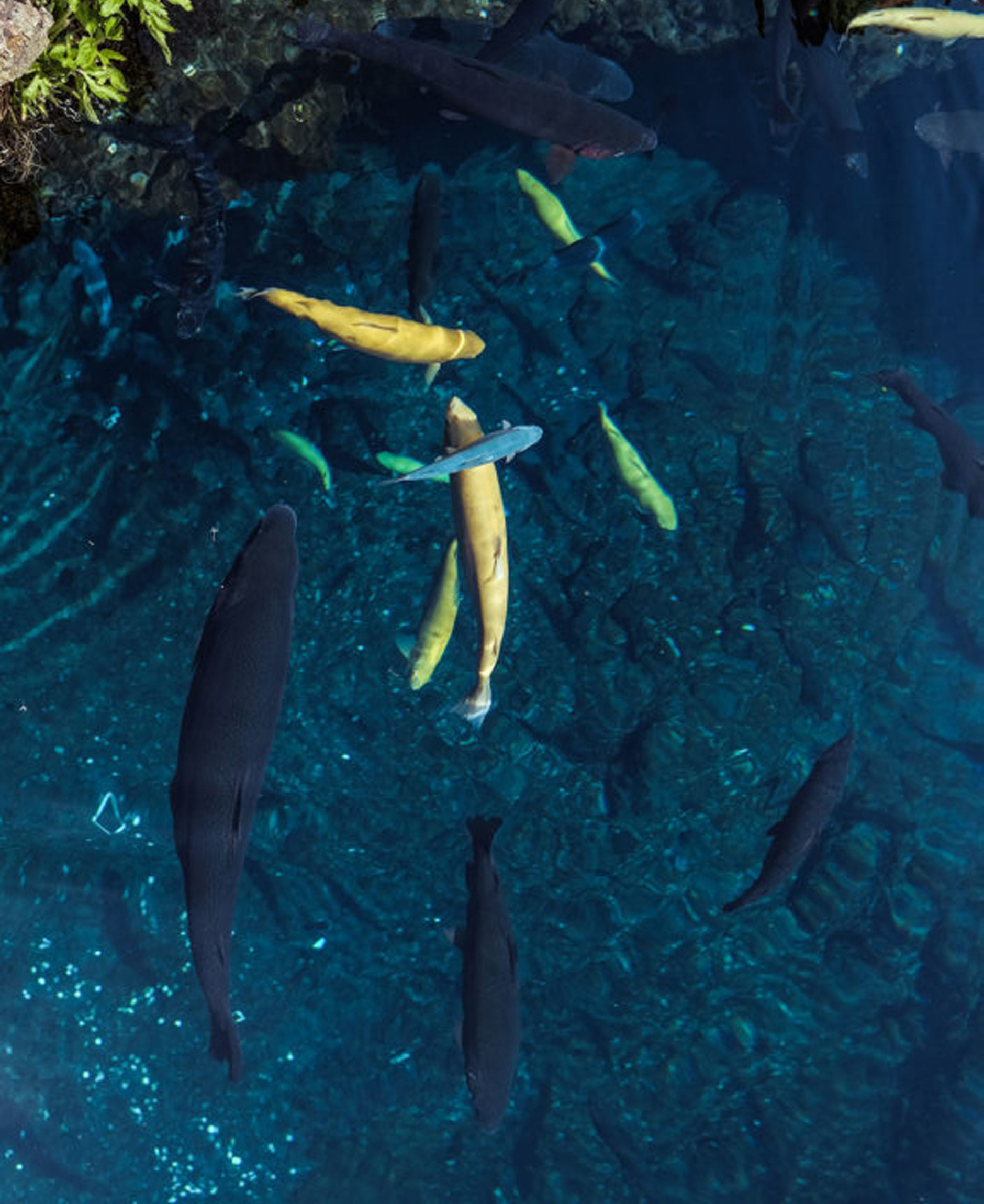
View this post on Instagram
View this post on Instagram
THE HISTORY OF OSHINO AND THEIR SPECIAL PONDS
When visiting the Mount Fuji area you might have heard of the famous “Fuji Five Lakes.” The town of Oshino was originally the sixth lake but over many hundreds of years, it dried out and turned into the village we see today. The remanence of the lake can be found in the eight spring ponds (called ‘Hakkai’) that spot the area with their lush turquoise blue colour and stunning clarity.
The springs receive water from the melting snow on Mount Fuji’s peak which leads into its underground reservoir resulting in super clear spring water. Because of its direct link to Mount Fuji, the ponds are thus sacred and became an important place for Mount Fuji Worshippers.
If you are interested in the history of Oshino’s ties to mountain worshipping rituals, be sure to visit the tourist information centre but in short, worshipping at Mount Fuji is performed by pilgrims to seek spiritual power from the act of climbing to the summit. Oshino was the site that pilgrims used to purify their bodies as a symbolic ritual of death and rebirth before making their ascension to the top. Each of the eight ponds also is linked to the Eight Great Dragon Kings folklore. As the gods of water and messengers of Mount Fuji, each dragon king is enshrined in each pond as its deity.
ABOUT THE EIGHT PONDS
WAKU-IKE POND AND NAKA-IKE POND
The most volume of spring water and the best scenery
Waku-Ike is the pond that greets you at the center of the village and reflects the ever-changing scenery on its surface as you walk by. With its quality of water and central location, its a great representation of Oshino Hakkai’s best. Mixed with the clarity of the water and the perfect position of the background, it also has one of the best scenic shots with Mount Fuji in the background. Alternatively, for those who missed seeing Mount Fuji in the background, the pond’s mirror effect also creates the illusion of the pond’s ‘nijimasu’ fish swimming in the sky.
Legend tells long ago when Mt. Fuji erupted, people suffered greatly from a burning fever. As their homes and fields burnt their thirst grew and the people’s cry for water spread throughout the earth to the heavens. The female deity of life granted the people’s wish for water and created the pond.
Naka-Ike pond, on the other hand, is actually artificially made and accessible through the souvenir shop funnily enough. Despite this, it is still beautiful to pass and peer into its depths.
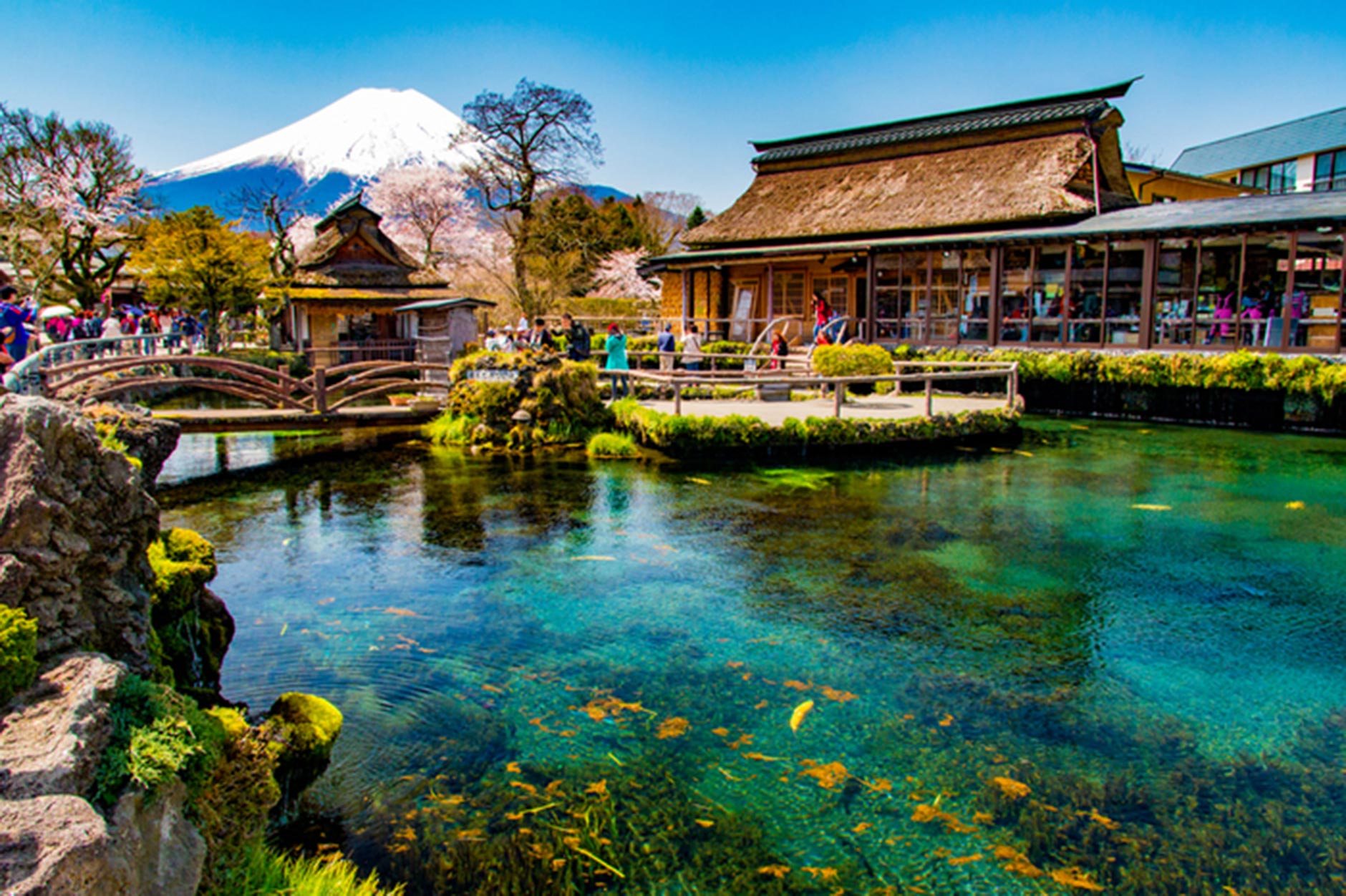 Photo Credit: https://kinarino.jp (website)
Photo Credit: https://kinarino.jp (website)
Sokonashi-ike Pond
The bottomless pond
It is said long ago that carelessly washing anything in this pond will be taken straight out of your hands by the pond’s whirlpool and lost forever. However, it is also said
that it can reappear a short time later rising to the surface in another spring called Okama-Ike pond. There is a belief handed down within the villages’ people that washing things in this pond is to buy God’s wrath. You can find this spring behind the Hannoki Bayashi Shiryokan Museum.
Deguchi-ike pond
Pond of miraculous water and the biggest in Hakkai
The water from this pond is sacred. Nicknamed ‘miracle clean water,’ it was used to purify the pilgrims and their wounds before their pilgrimage. It is still strongly
believed that carrying this spring’s water up Mount Fuji will ensure a safe journey. It is the furthest away from the village (‘deguchi’ means ‘exit’) and features an Inari Shinto shrine in the forest that overlooks the pond.
Okama-Ike pond
Small but abundant in clear water
The smallest pond in Oshino Hakkai it is named ‘okama’ meaning ‘pot’ in English because of how the water bubbles up to the surface just like boiling water in a pot.
The pond also has another name ‘Giant Frog Pond’ because of an old folklore of a girl who was dragged into this pond by a giant frog living at the bottom. It is said that things which are lost float to the surface.
CHOSHI-IKE POND
The pond of love knots
Easy to miss, this pond is hidden on an off-path along the riverside behind the Hannoki Museum’s grass meadow and is a great example of how the springs work in action. It takes a few tries to find and spot it but, if you look down at the bottom of the pond you will see a pocket of sand which ‘boils.’ This is how the
underground water filters into the ponds!
The legend behind the name is a funny yet sad tale of a newly wedded bride who farted so bad in the middle of her wedding (yes, I kid you not) she threw herself into the pond out of embarrassment embracing her love knot. The only thing remaining of her was her sandals reflecting from the bottom.
Kagami-ike Pond
Reflections of Mount Fuji
Legend says this lake has the spiritual power to distinguish between the good and
evil in all things. The stillness of the water in this pond also creates a mirror effect which reflects an inverted Mount Fuji on its surface.
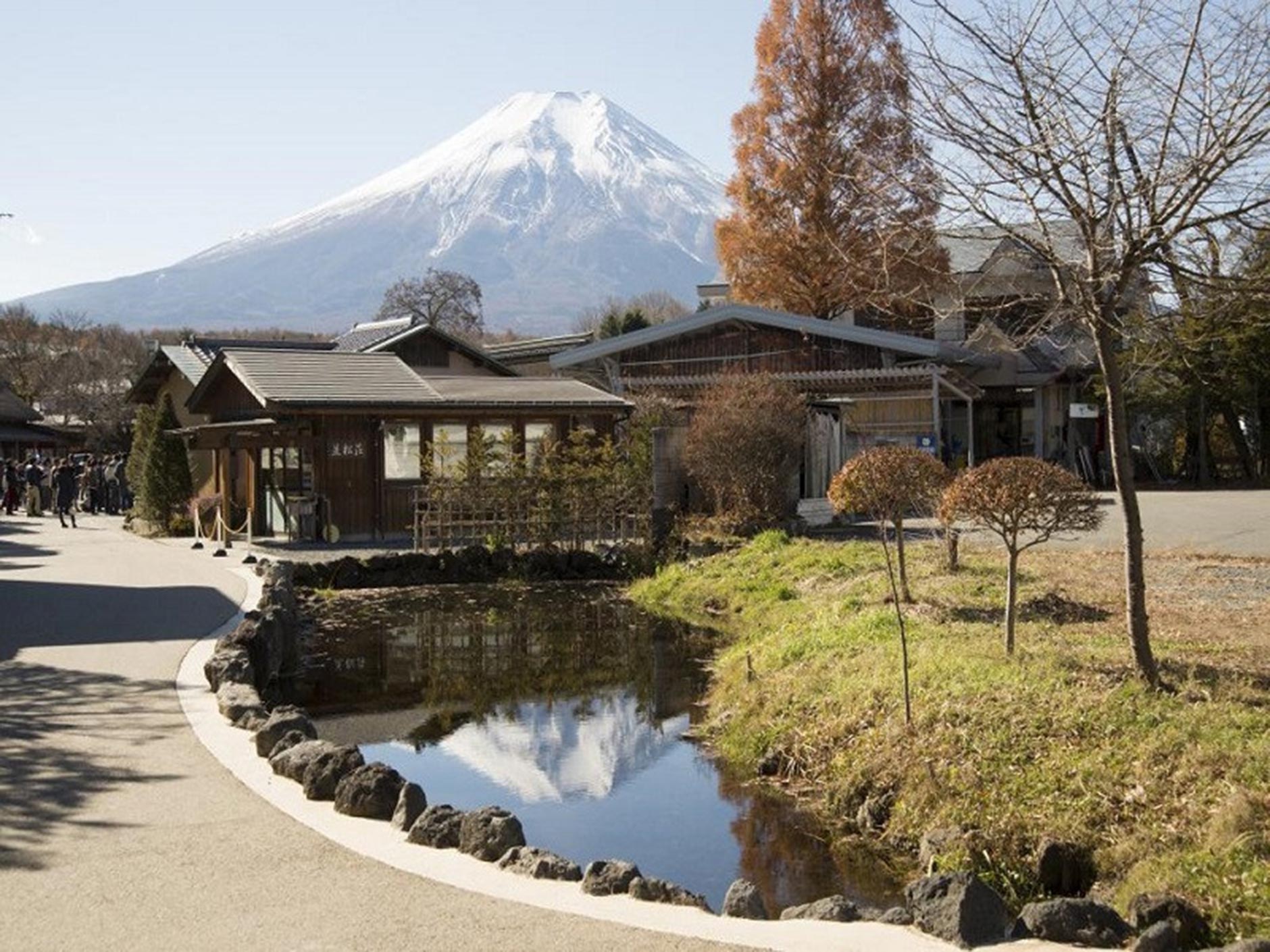 Photo Credit: www.yamanashi-kankou.jp (website)
Photo Credit: www.yamanashi-kankou.jp (website)
Shobu-ike Pond
Where tradition remains and the sweet flags grow
Located near Kagami-Ike pond, Shobu-Ike is named after the beds of sweet flags
(flowering water plants that bloom purple, white or yellow iris petals) that surrounds it. The local legend is that illness can be cured if you rub the iris onto your body.
8. Nigori-ike Pond
The murky water that turns crystal clear in a glass
Although all the ponds appear to be flowing clear water, Nigori-Ike pond ironically is called ‘unclean’ or ‘impure’ for a reason.
The story is that in the beginning this pond was very clear and was used as drinking water by the townspeople when one day a beggar looking pilgrim who was passing
by asked the landlord for a glass of water to drink. The landlord refused and as soon as she did, the pond turned forever muddy and would only turn clear when scooped into a glass.
The more err, I guess, ‘scientific’ reason is the spring at the bottom of the pond gushes only a small volume of spring water continuously. So while it appears muddy at first glance, it turns beautiful and clear in small quantities when scooped out.
How to Use This Map: The map below is an interactive map you can use to find your preferred location. To use the map, click the icon in the top left-hand corner to pop open the navigation bar. Here you can click on each location to navigate to it.
WHAT TO DO
Test the cold waters
Close to the centre of Oshino Hakkai’s shopping area, there is a water feature that reads “Water Melted from Mount Fuji’s Snow” where you can feel how icy cold the
spring water really is. Try to see if you can stick your hand in for 30 seconds because it is seriously cold AF!
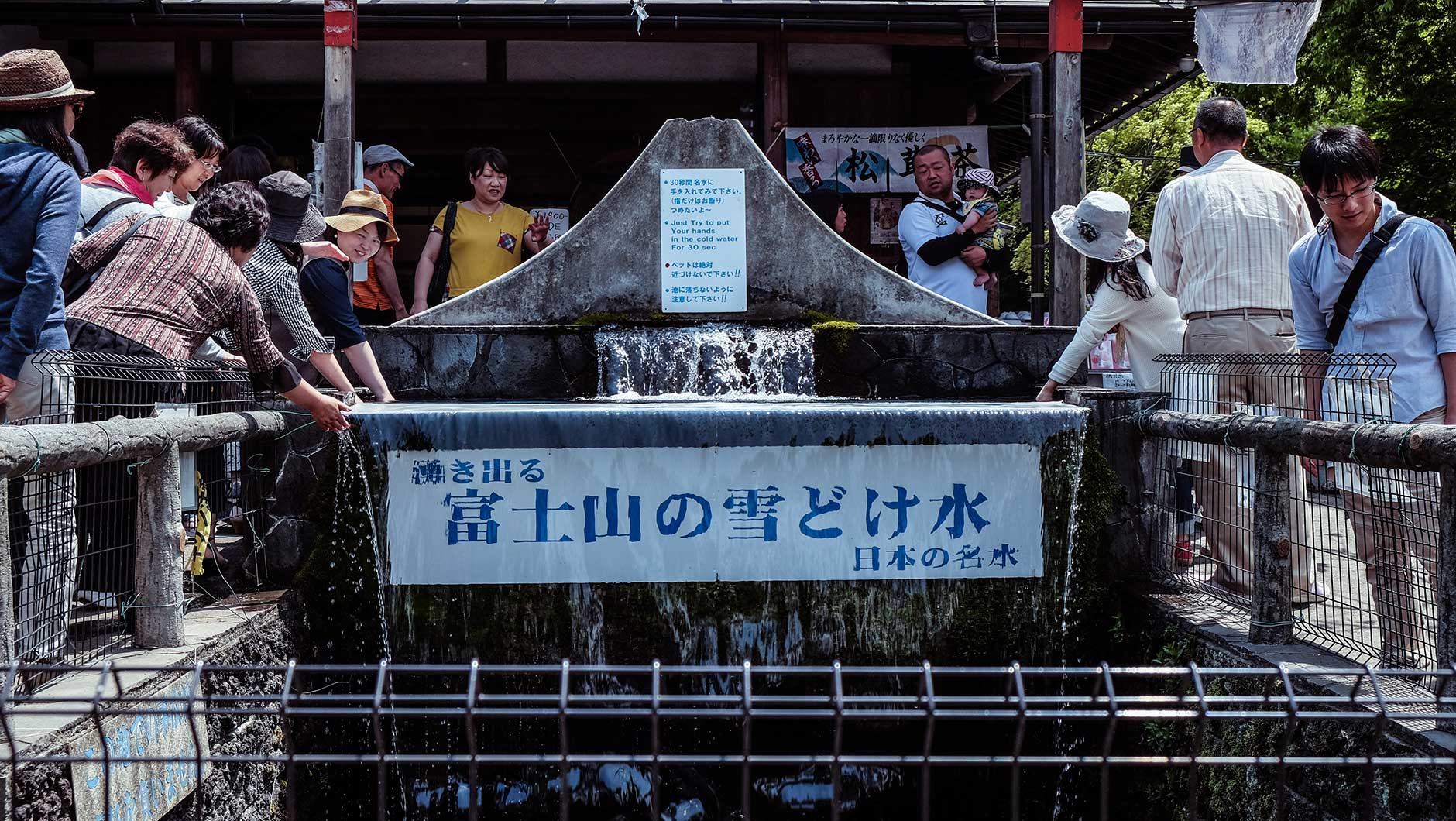
DRINK FROM THE SOURCE
With all this talk about clear beautiful water, it’s only natural you would want to try it out for yourself! Head into the souvenir shop and on the way to the Naka-Ike pond you will see a waterfall fountain on your right with natural spring water flowing
water flowing for you to drink or take home. The water thanks to the natural filtration of the lava underground is safe to drink as it is and the shop also sells empty water bottles on hand.
View this post on Instagram
View this post on Instagram
MAKING FISH FRIENDS
At certain spots within the main area of Oshino Hakkai you can find boxes selling fish food to feed the many nijimasu trout which swim in the ponds. By far the most interesting ones are the yellow and blue coloured nijimasu which are super vibrant even in the water.
You can also try to “touch” the passing fish at the Hannoki Bayashi Shiryokan Museum which is more challenging than it seems but an interesting past-time game to play if you are up for a challenge.
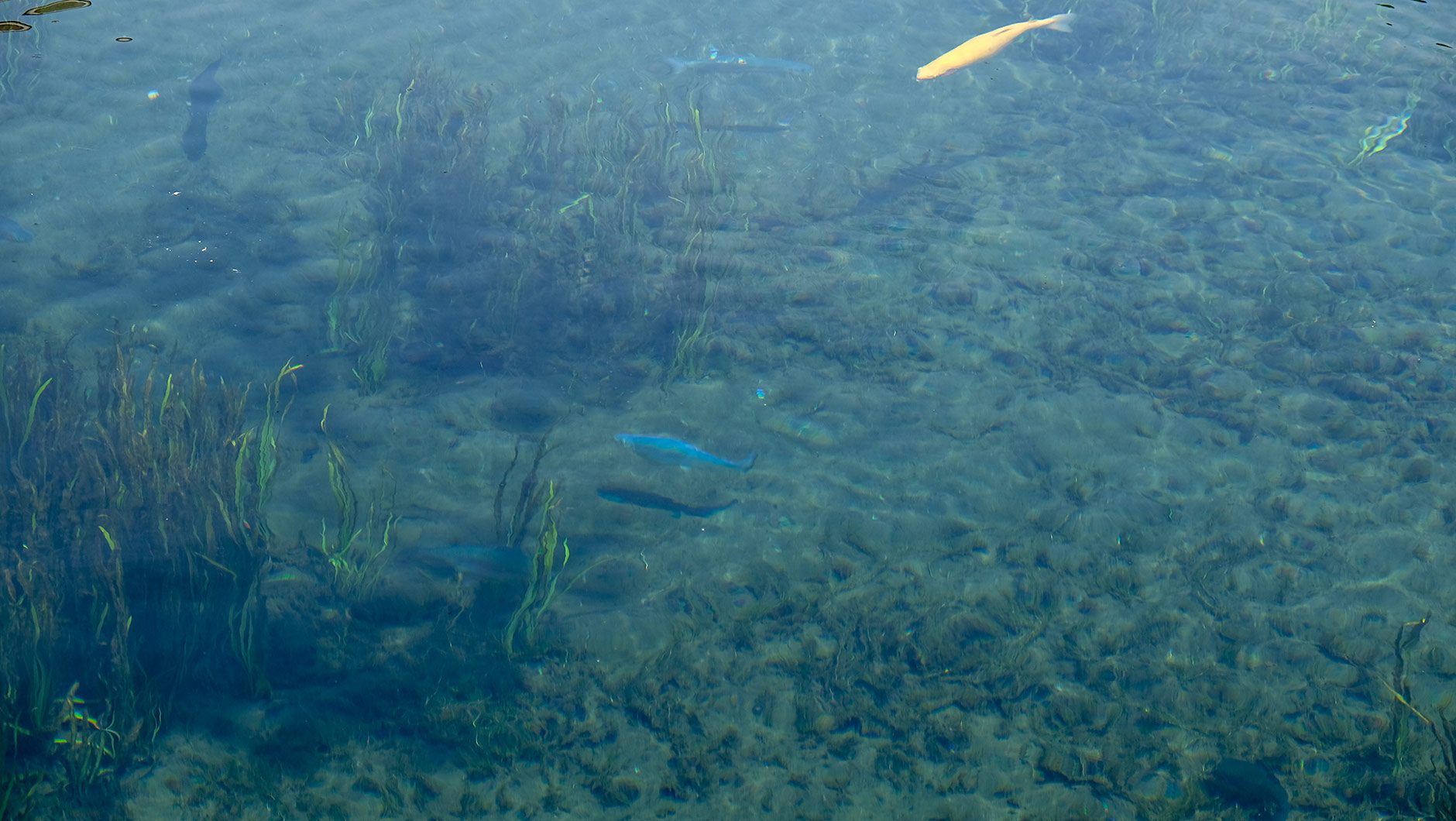
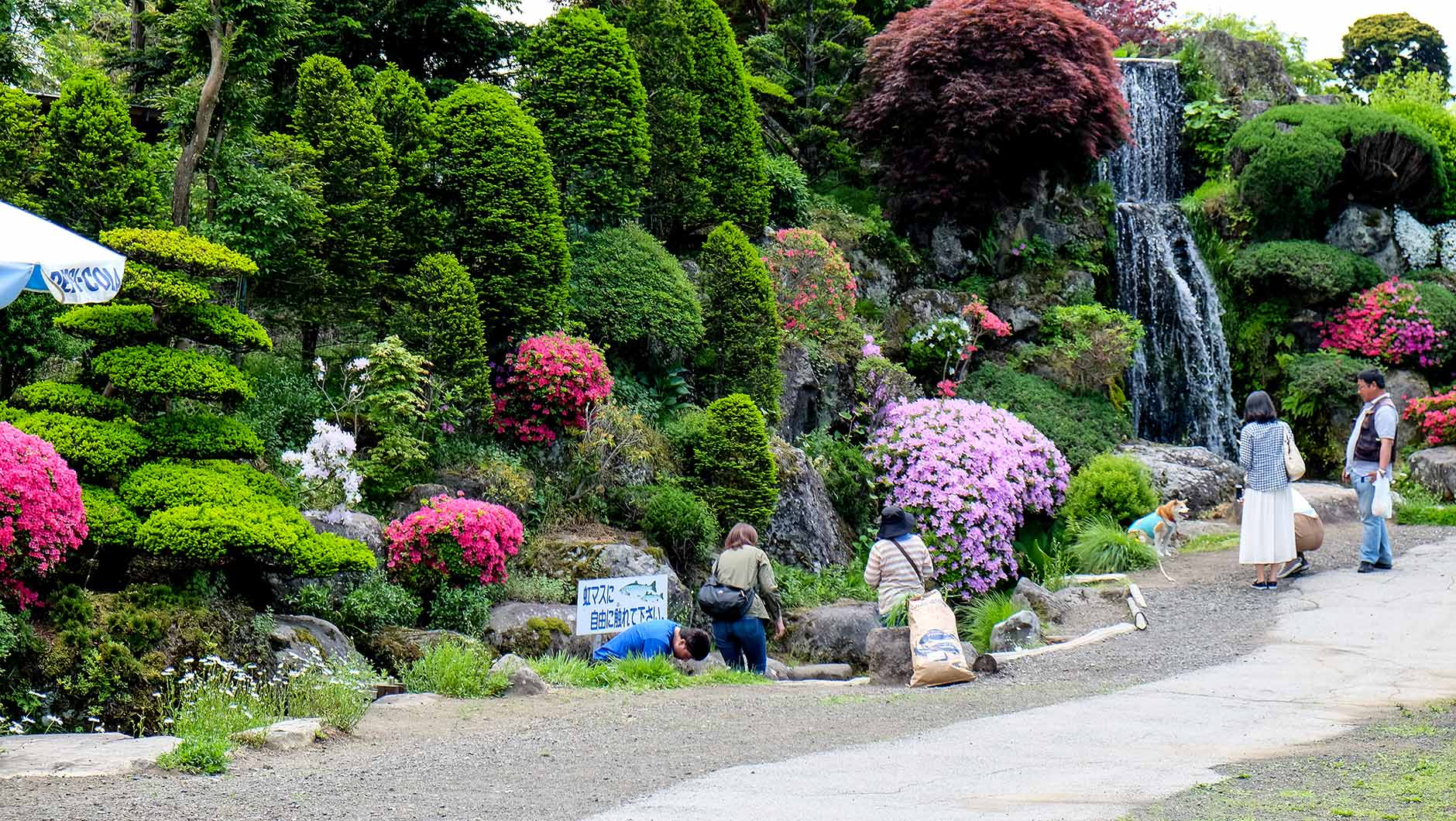 At the Hannoki Bayashi Shiryokan Museum, try your hand at touching the nijimasu that swim by. It’s not as easy as it sounds!
At the Hannoki Bayashi Shiryokan Museum, try your hand at touching the nijimasu that swim by. It’s not as easy as it sounds!
Spot the fish with the human face
Near the Naka-Ike pond area, you’ll see a sign that mentions a gold coloured nijimasu whose pattern resembles a human face on well, it’s own face!
See if you can spot it out.
EXPLORE HANNOKI BAYASHI SHIRYOKAN MUSEUM
For a small fee, you can enter the Hannoki Bayashi Shiryokan Museum, an opened museum featuring a traditional thatched roof farmhouse displaying various artifacts such as farming tools, household items, and even weapons.
Don’t forget to check out the staircase that leads onto the rooftop of the museum’s entrance to get a panoramic view of the main area of Oshino Hakkai or if you’re lucky enough, it’s a great vantage point to see Mount Fuji in the background – usually, fog gets in the way!
What to eat
Oshino has some great produce thanks to its incredibly clean water and fertile soil and is famous for their corn, soba, and tofu.
Here’s my breakdown of the best regional foods to try while you’re visiting:
Soba and Houtou
Oshino produces some great soba noodles but visiting the Yamanashi area is not complete without eating their famous houtou noodles. More similar to udon noodles, it’s a special flat wheat noodle cooked with vegetables in hot miso broth.
We ate at 御食事処 いろり (Oshokujidoro Irori) located very close to Oshino Hakkai (see the location on the interactive map).
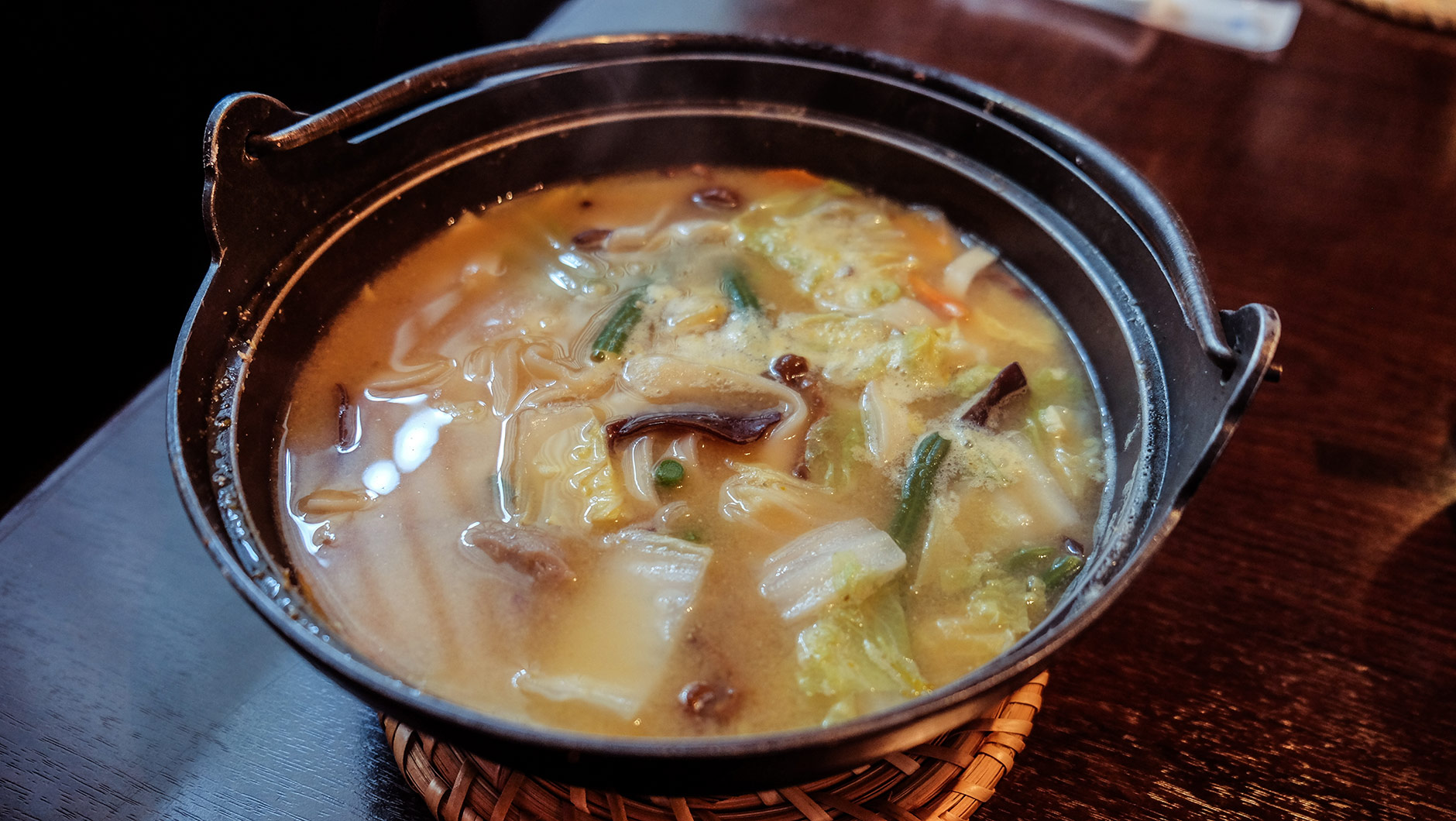
Yomogi and Kushi Dango
When I’m in the mountain areas of Japan it has become an unspoken tradition of mine to eat dango or mochi. In Oshino there are two types to try: yomogi or Japanese mugwort mochi has a nice ‘grass’ aroma and is filled with sweet red bean
paste while kushi dango is grilled rice balls flavoured with sweet soy sauce. It sounds like a strange combination but if you like the distinctive sticky flavour of Marmite you’ll definitely enjoy this treat!
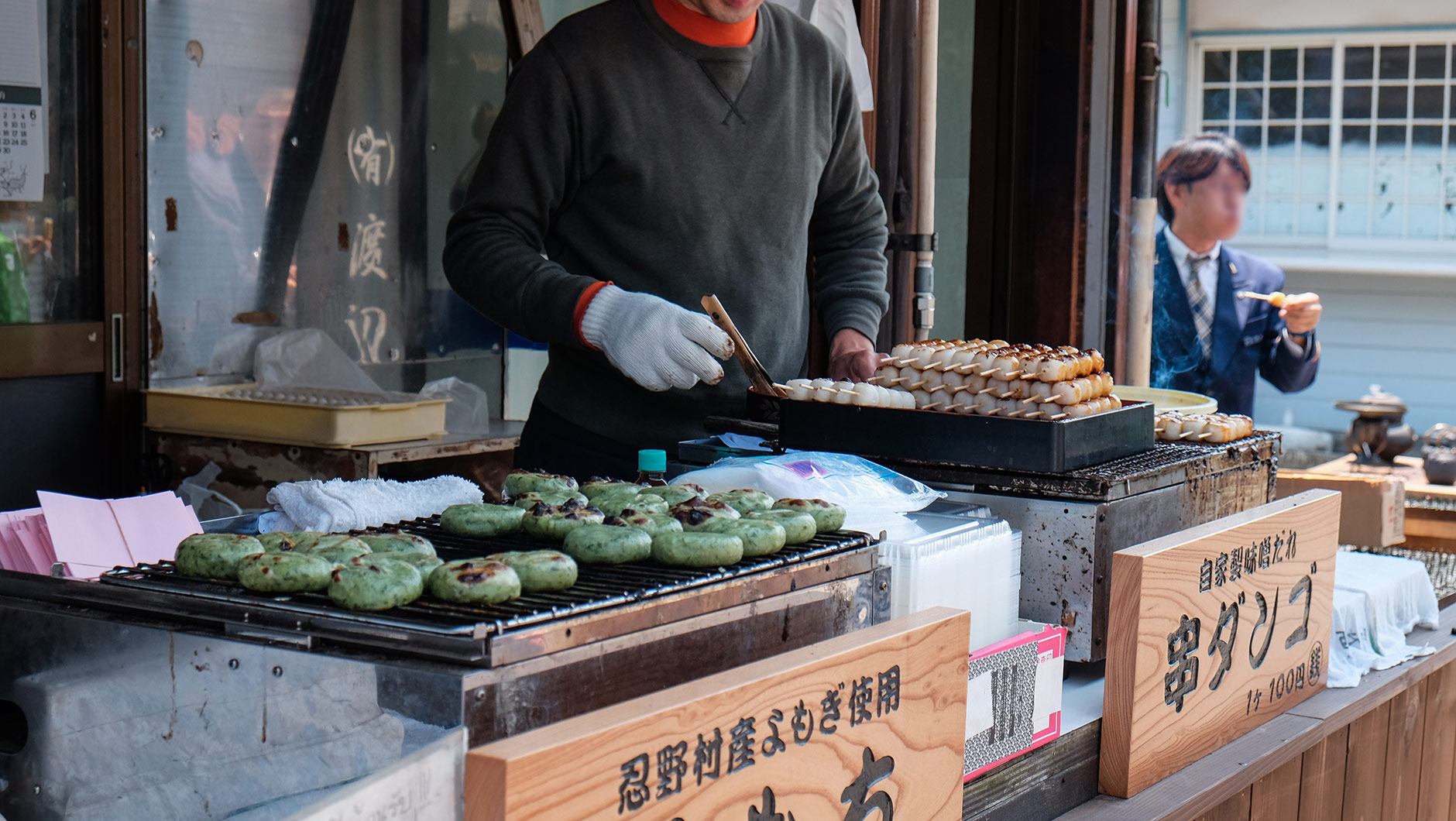
Satsuma-age
Although it’s a specialty of Kyushu’s Kagoshima, there is a great satsuma-age food store in Oshino Hakkai near the souvenir shop. Satsuma-age is a fried fishcake made from fish paste and flour. There are many different varieties offered at the main
souvenir shop leading to Naka-Iku pond including chili squid, scallop mayo and prawn with pumpkin and veggies.
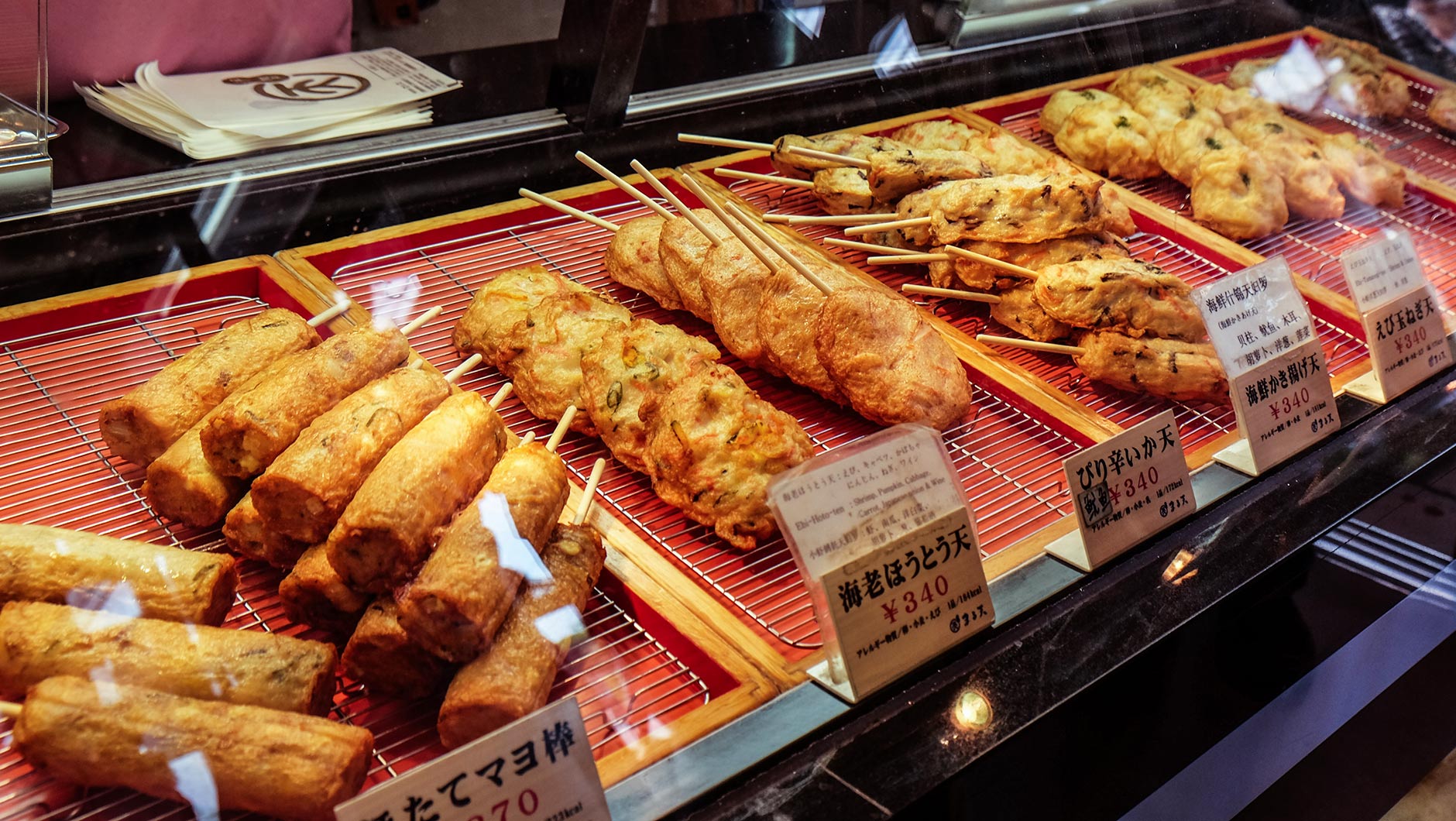
Pickles, miso, and Tofu
Fresh tofu is incredibly smooth and creamy but in Oshino they put an extra twist to the classic staple and served it with a pickled spicy miso paste which tastes amazing! If you are a pickle addict like I am there are more than 50 kinds of pickles to be found
at the souvenir shop for you to taste-test and devour happily like the Mayor in the Powerpuff Girl.
HOW TO GET THERE
HIRE A CAR
With so much to see and do within the surrounding the area the best way to experience it all conventionally is to get a car. Google Maps and Apple Maps in Japan both work well in English and Japanese and makes driving a breeze if you are not familiar with the local language. Additionally, most rent-a-cars in Japan are equipped with an inbuilt navigation system should you not have access to the internet while traveling.
Another tip, since you will be traveling towards the Mount Fuji area which is a popular day trip spot during the weekends try to beat the traffic by arriving at around 10 AM if possible. From the car park (see interactive map for details), it’s only a 5-minute walk to Oshino Hakkai by foot.
Interested in renting a car? Toyota Rent a Car has services in English (as well as Chinese, Thai, and Korean) and you can book online here.
ARRIVING BY BUS
There are two main ways to take the bus to get to Oshino Hakkai (from Fast Japan):
1. From Shinjuku Station, take the Chuo Expressway bus (100 minutes) → at FujiQ Highland change buses. Take the Chuo Expressway bus (40 minutes) → Oshino Hakkai.
2. From Tokyo Station, take the Express Bus (120 minutes) → Mount Fuji Station, change buses → Fuji Kyuko Route Bus (15 minutes) → Oshino Hakkai
GENERAL INFORMATION
PRICE
OPENING HOURS
FACILITIES
- Unlimited travel to anywhere in Japan affordably using the JR Pass! Pre-purchase a 7 day, 14 day or 21 day here before leaving Japan.
- Tokyo – Sumo Wrestling Demonstration and Sumo Chanko Lunch: Learn about the world of sumo wrestling and try your hand at sumo wrestling with a professional as well! Tour also includes a traditional chanko hot pot lunch, the food of sumo wrestlers.
- Tokyo – Dynamic Tour of Tokyo Tower, River Cruise & Asakusa: Experience Tokyo’s exciting scenery and famous landmarks on this city tour. This tour also includes a tea ceremony demonstration and a scenic boat ride on the Sumida River.
- Tokyo – Tsukiji Fish Market: 3-Hour Food and Drink Walking Tour: Explore the maze of delicious food vendors at this world-famous food market. Learn the history of Tsukiji while sampling Japanese food culture first hand.
Need a place to stay near Oshino Hakkai? Search for accommodation using the widget below:
- The ultimate spring guide to seeing Tokyo’s Cherry Blossoms
- How to take photos, play and have fun at teamLab’s Borderless



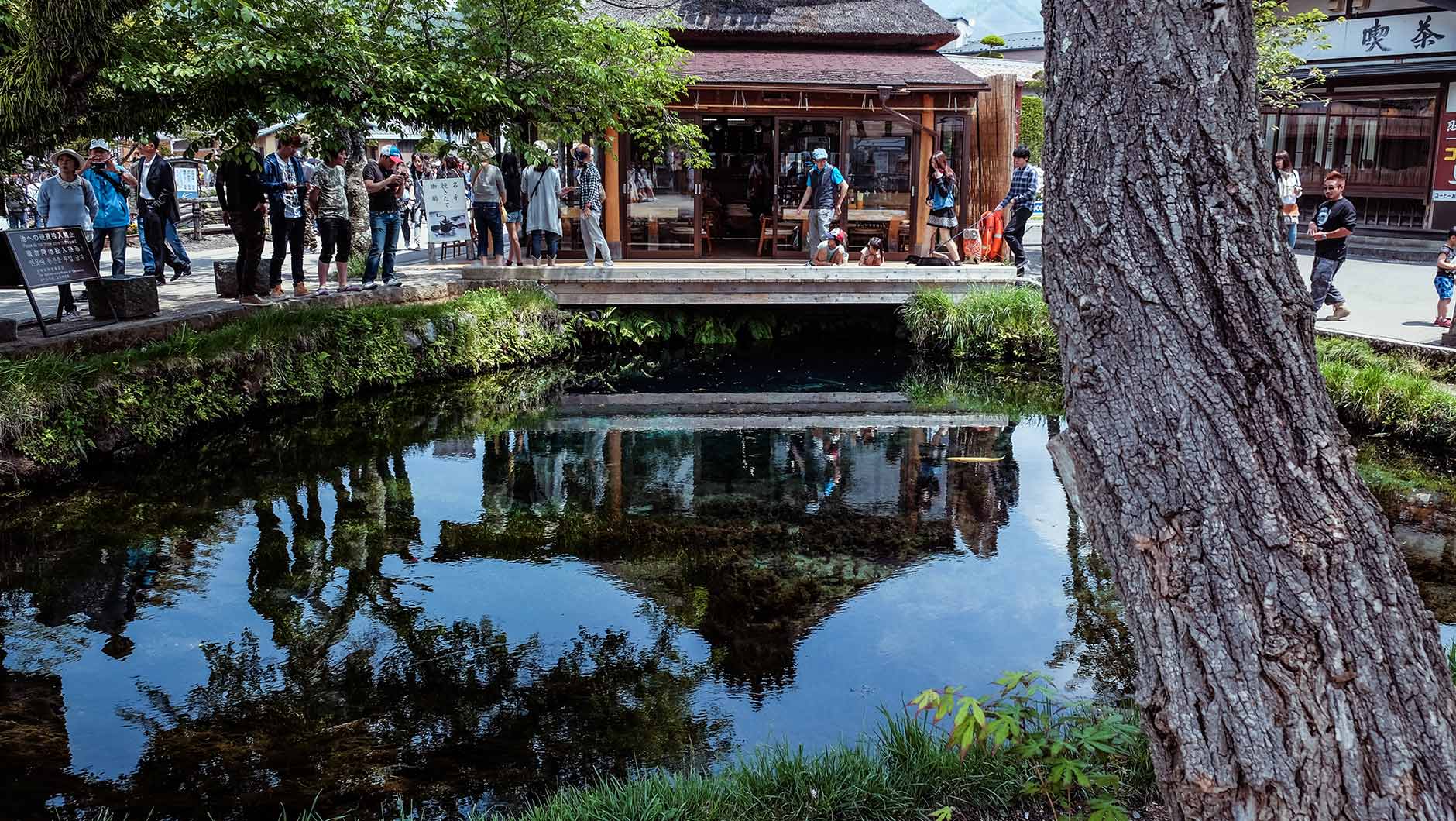
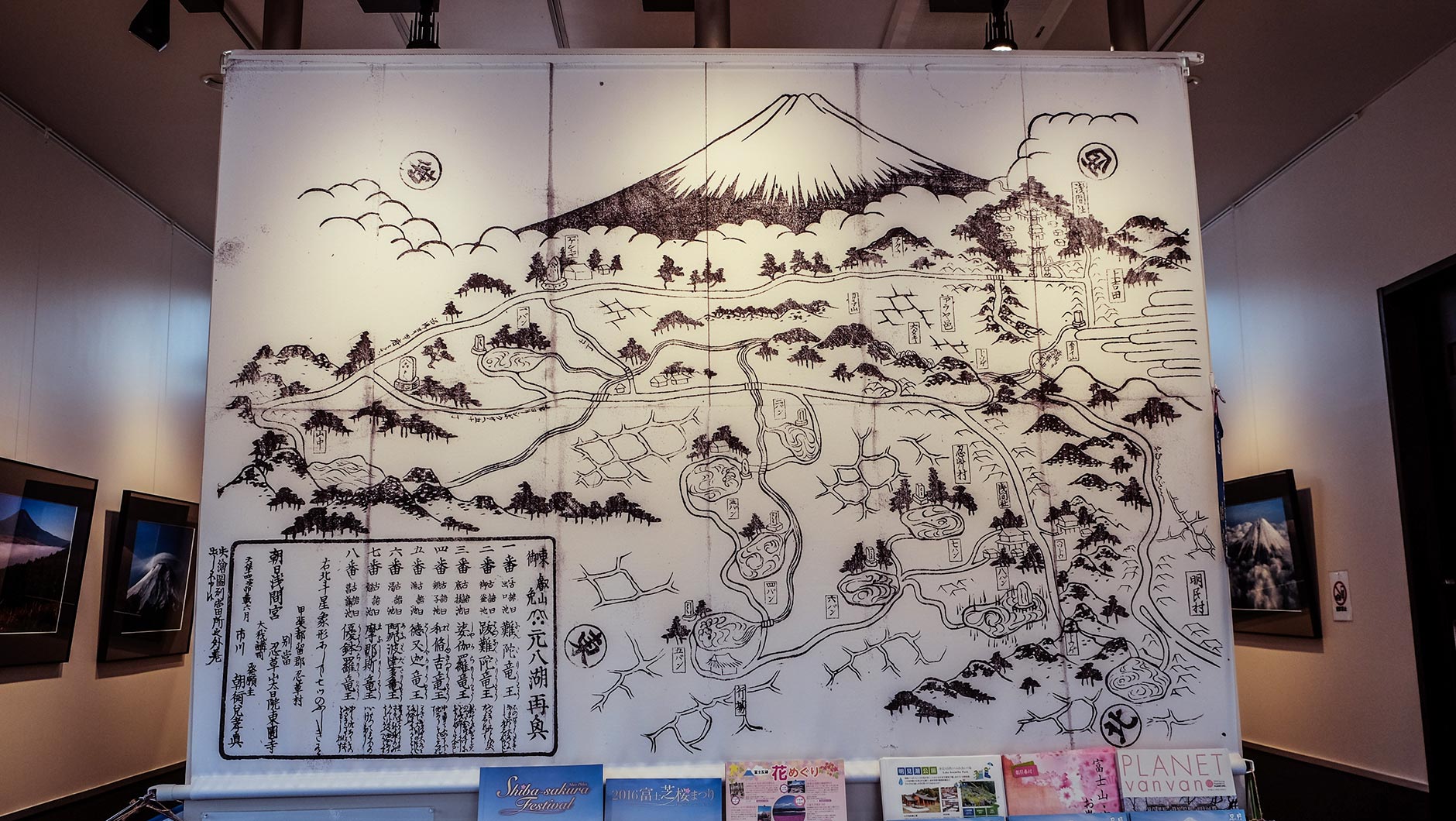
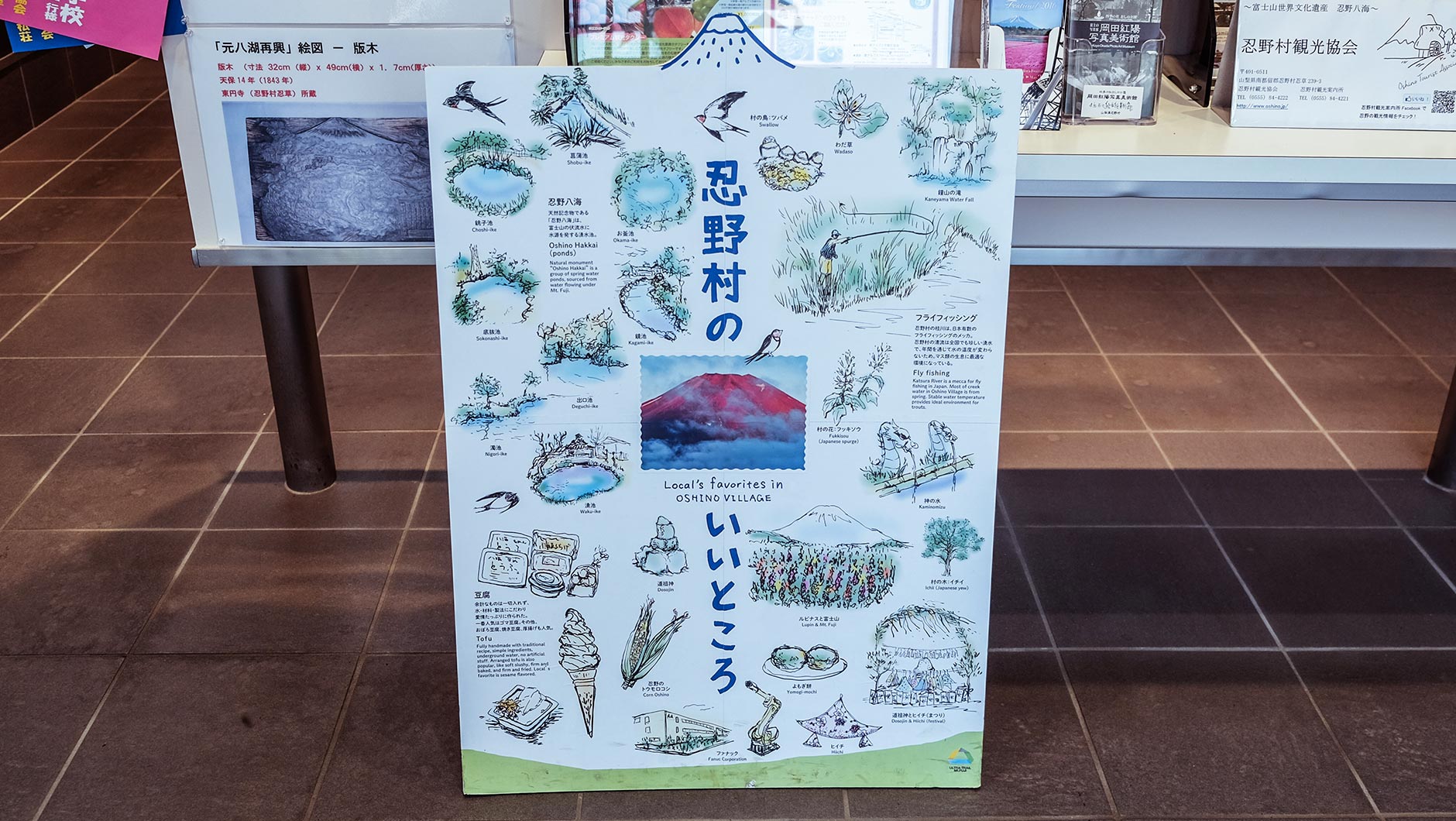
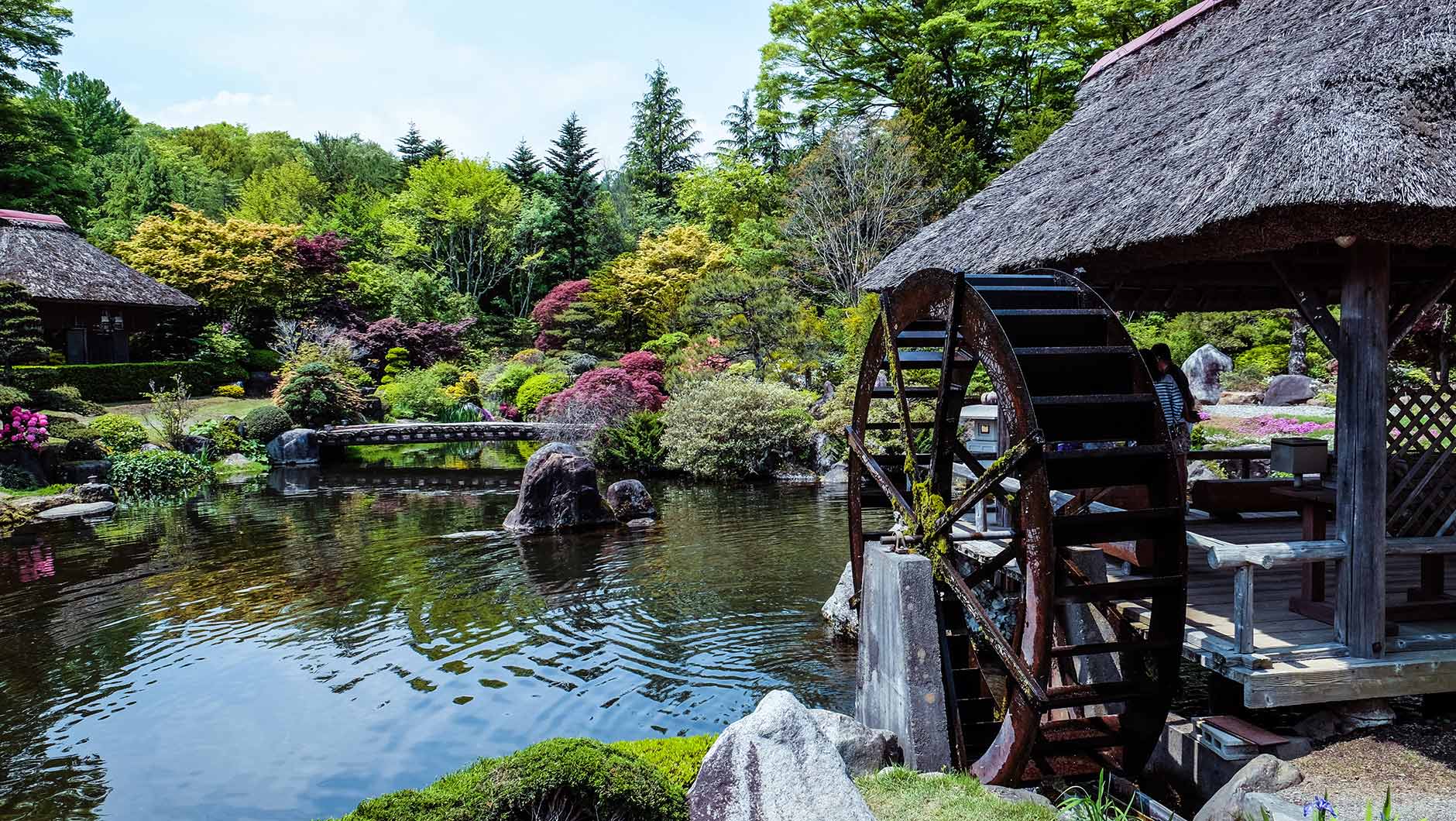
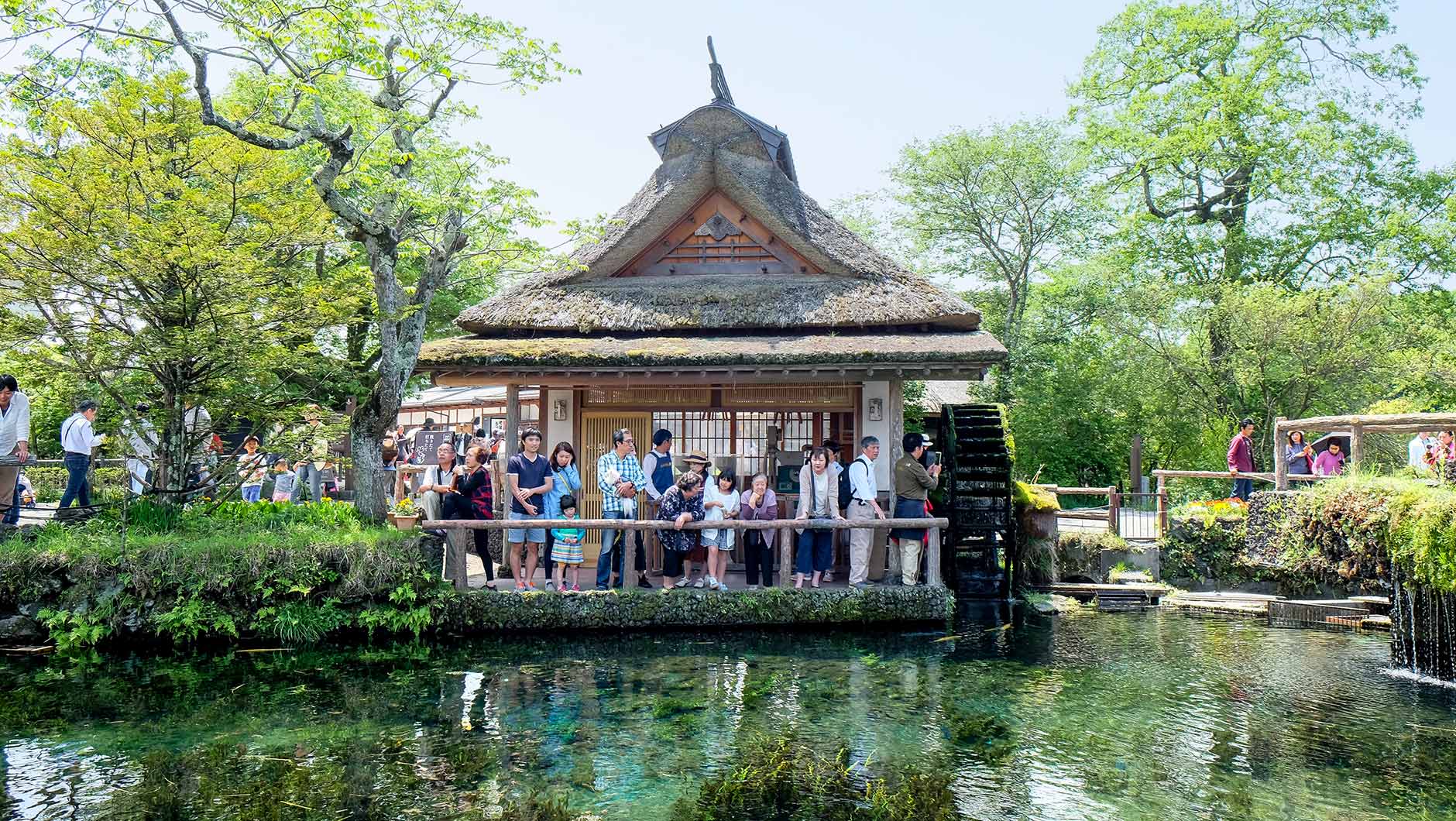
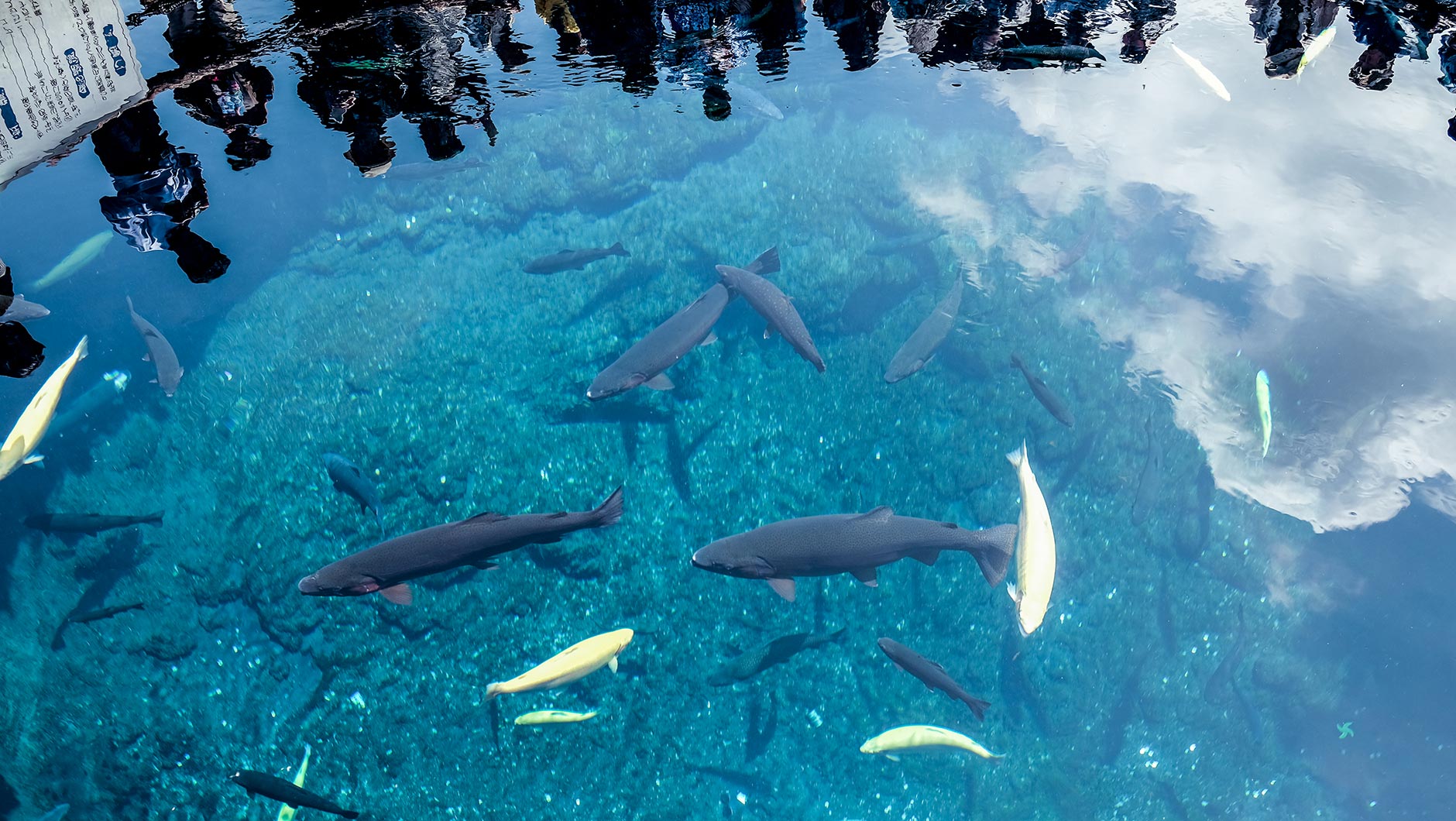
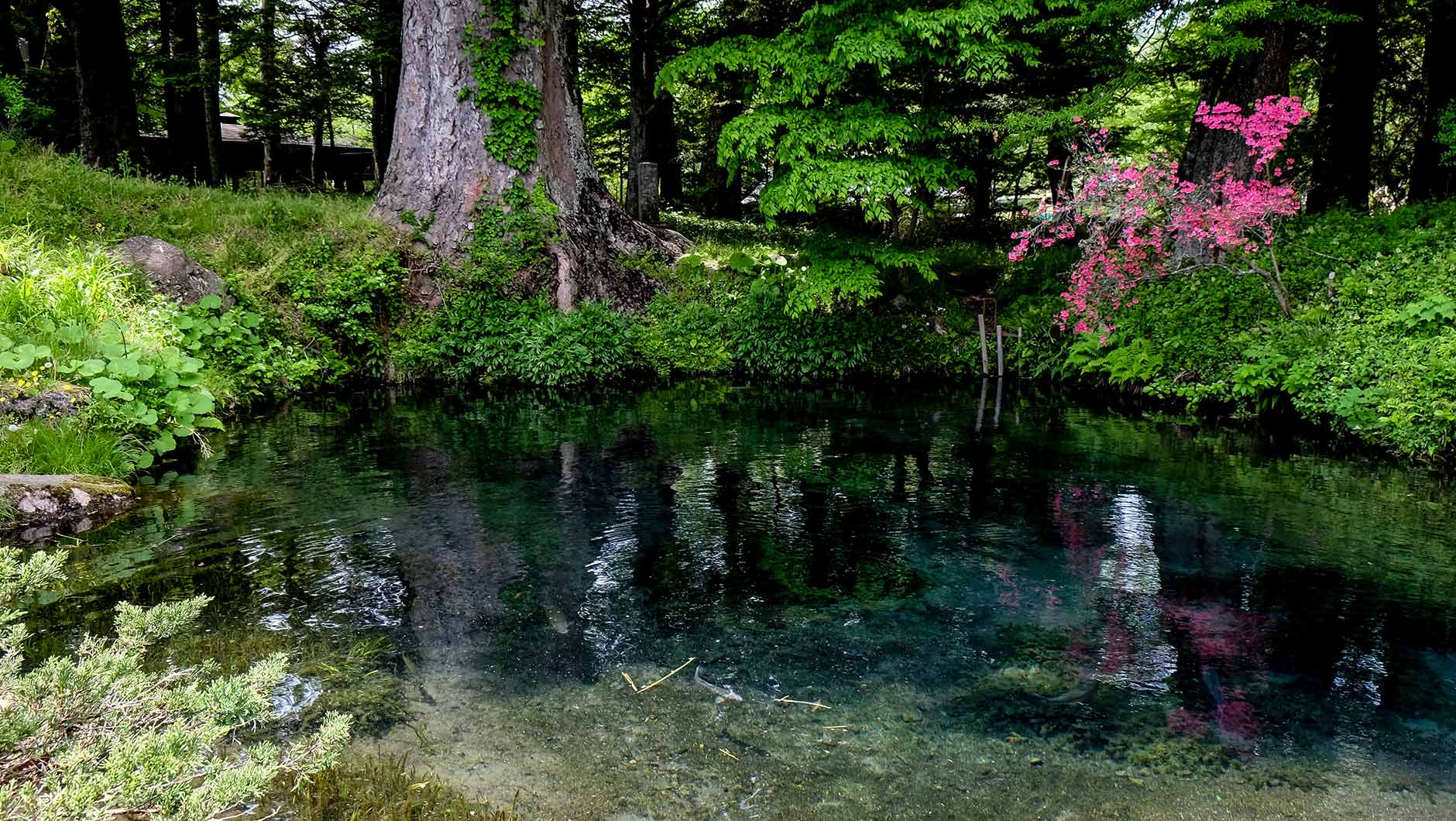
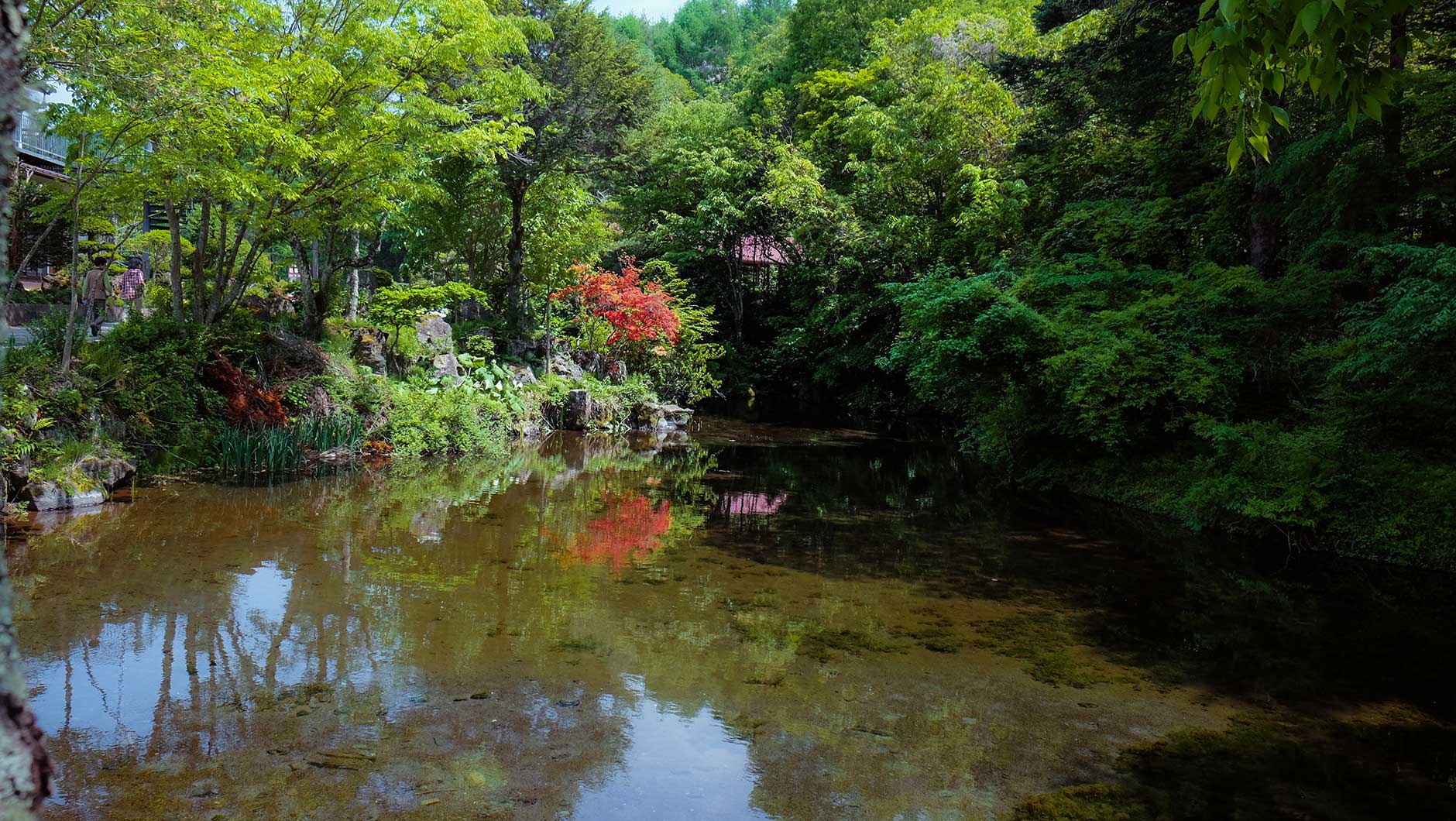
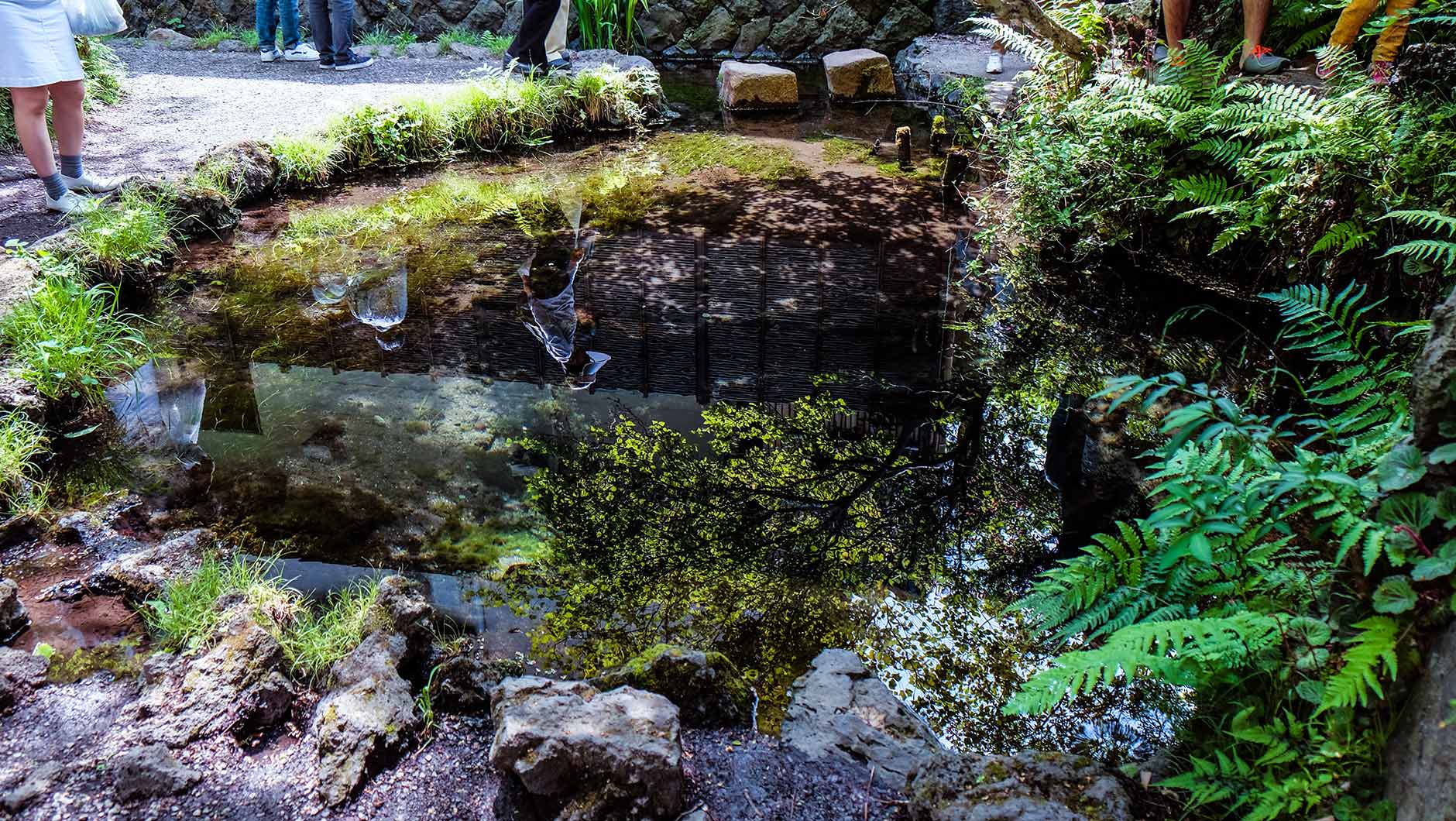
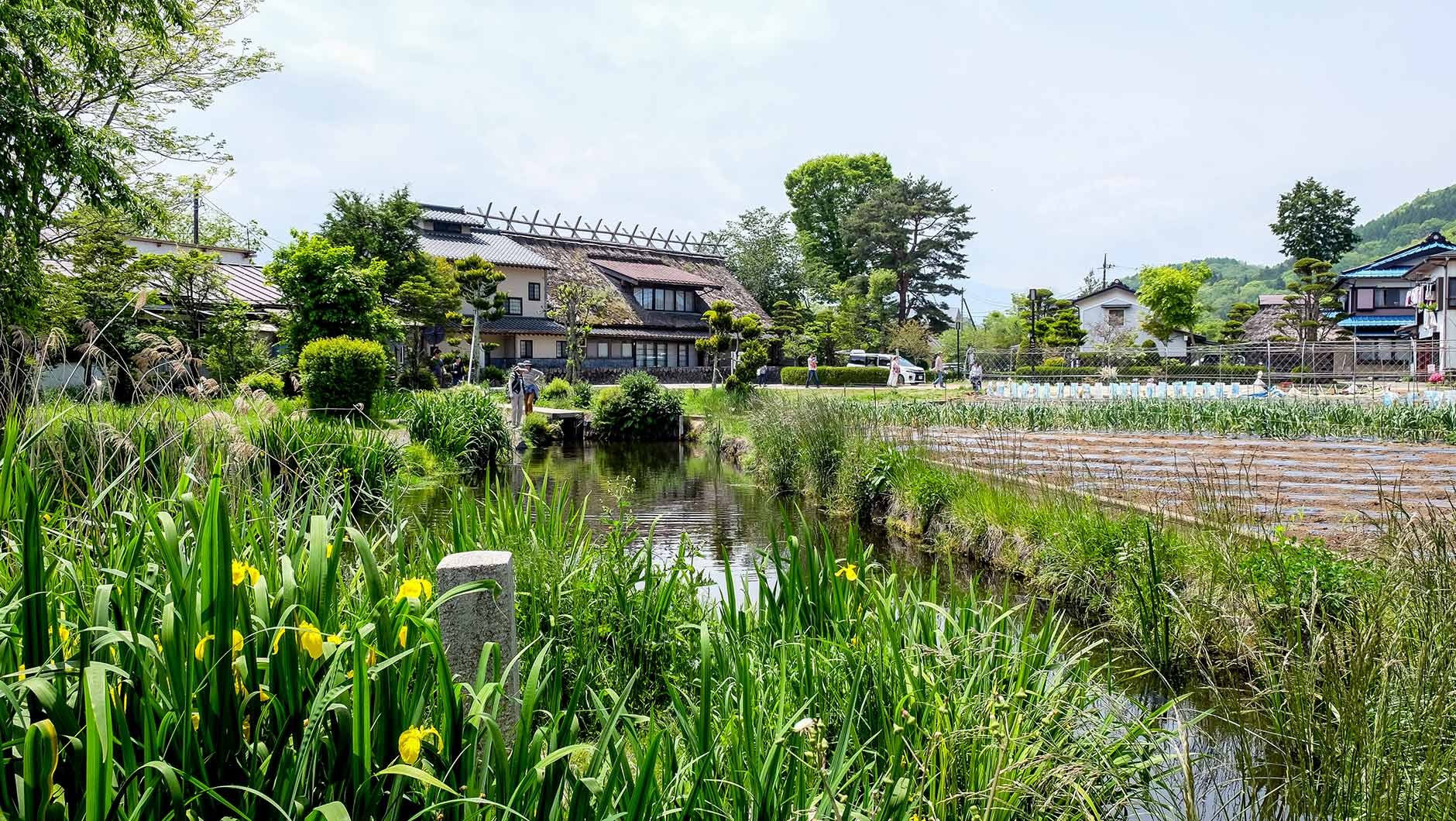
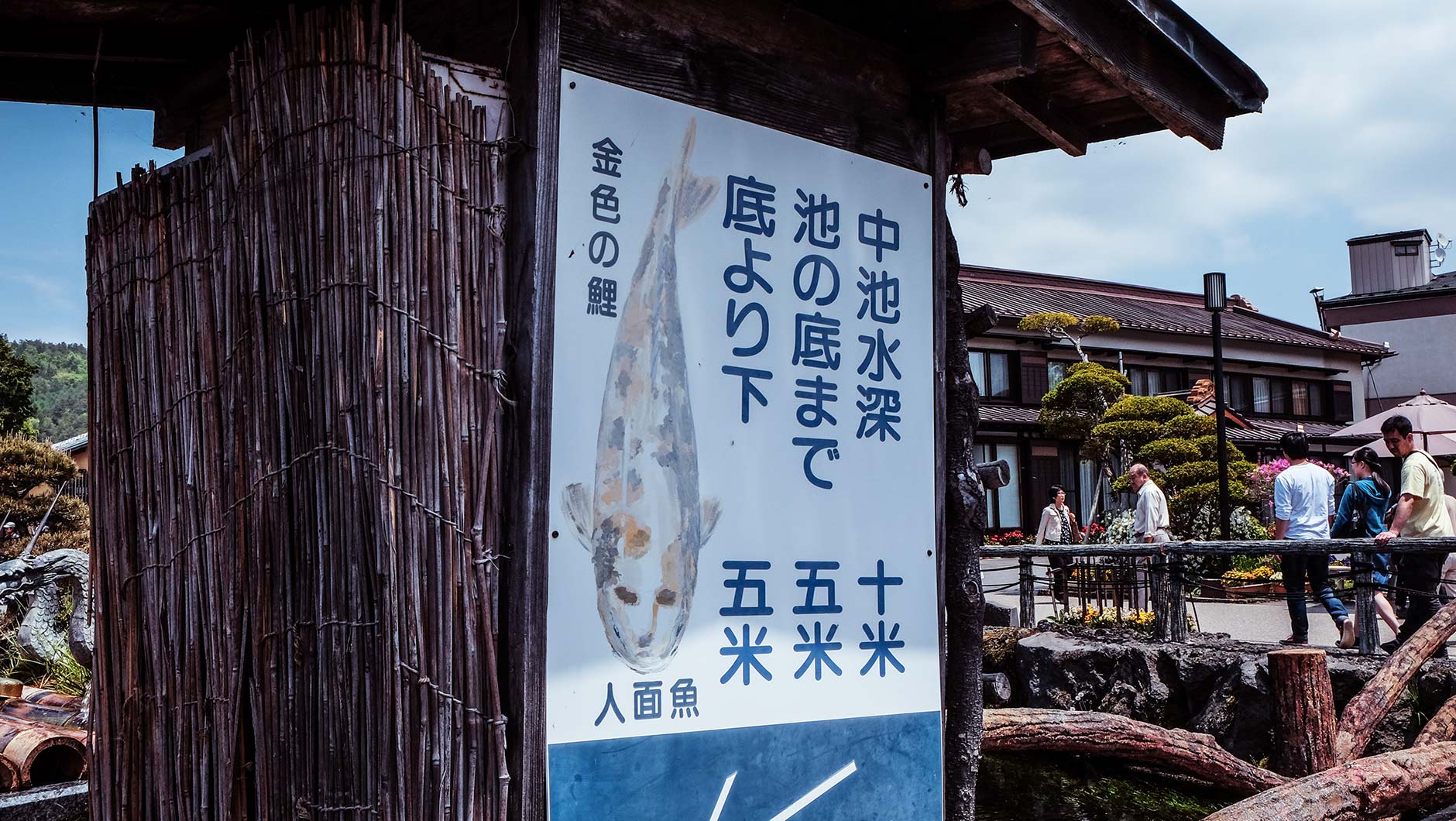
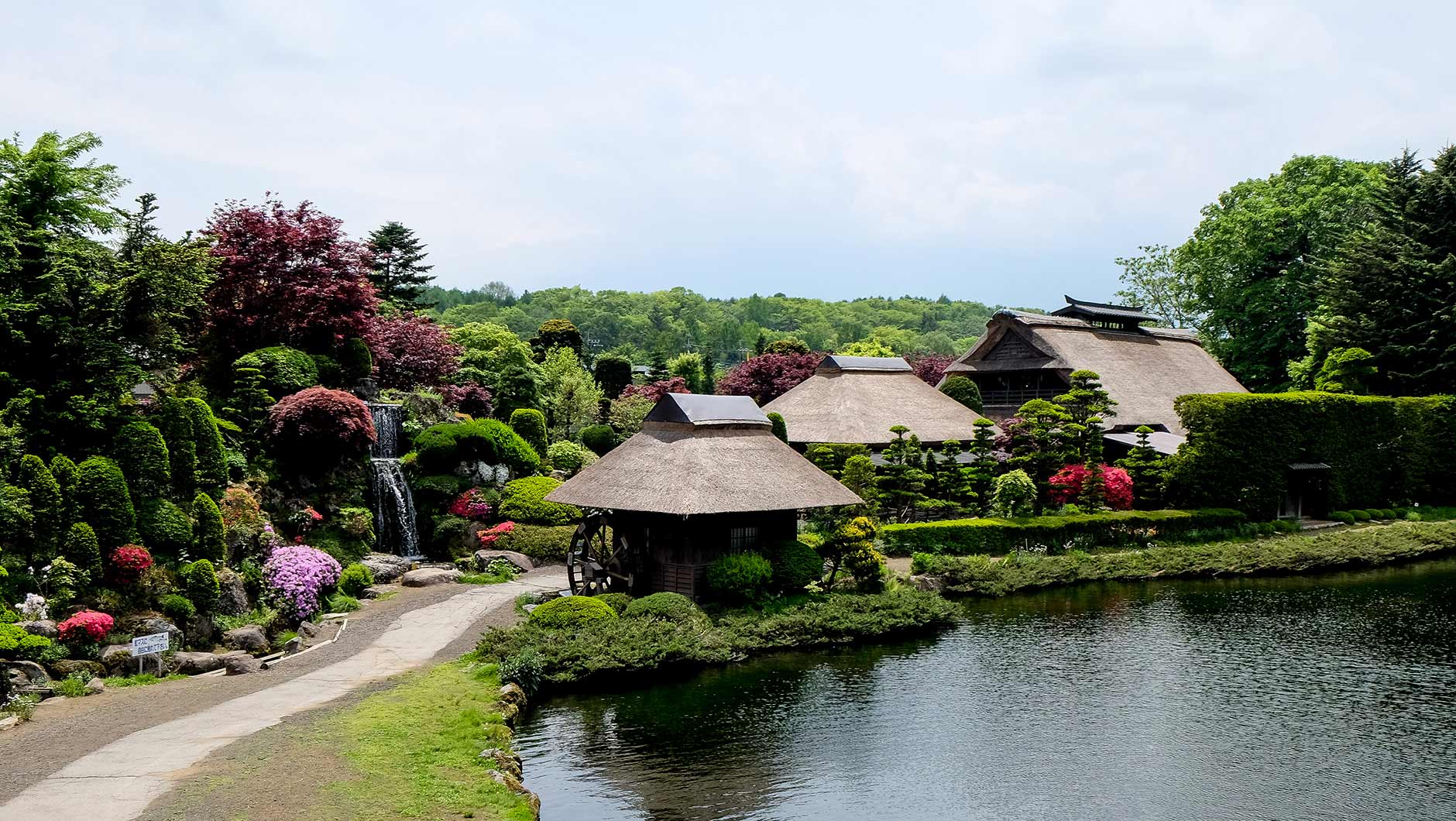
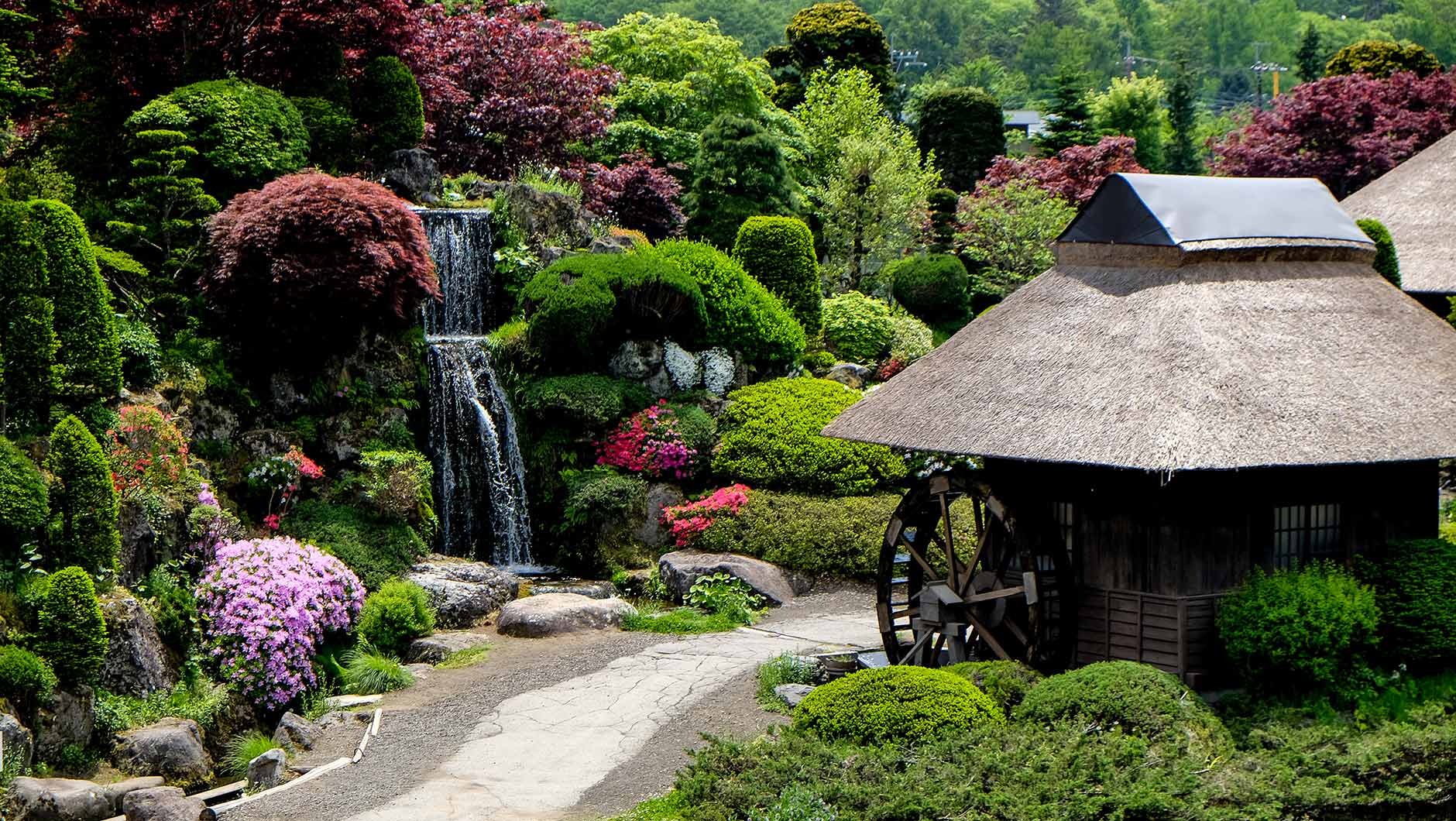
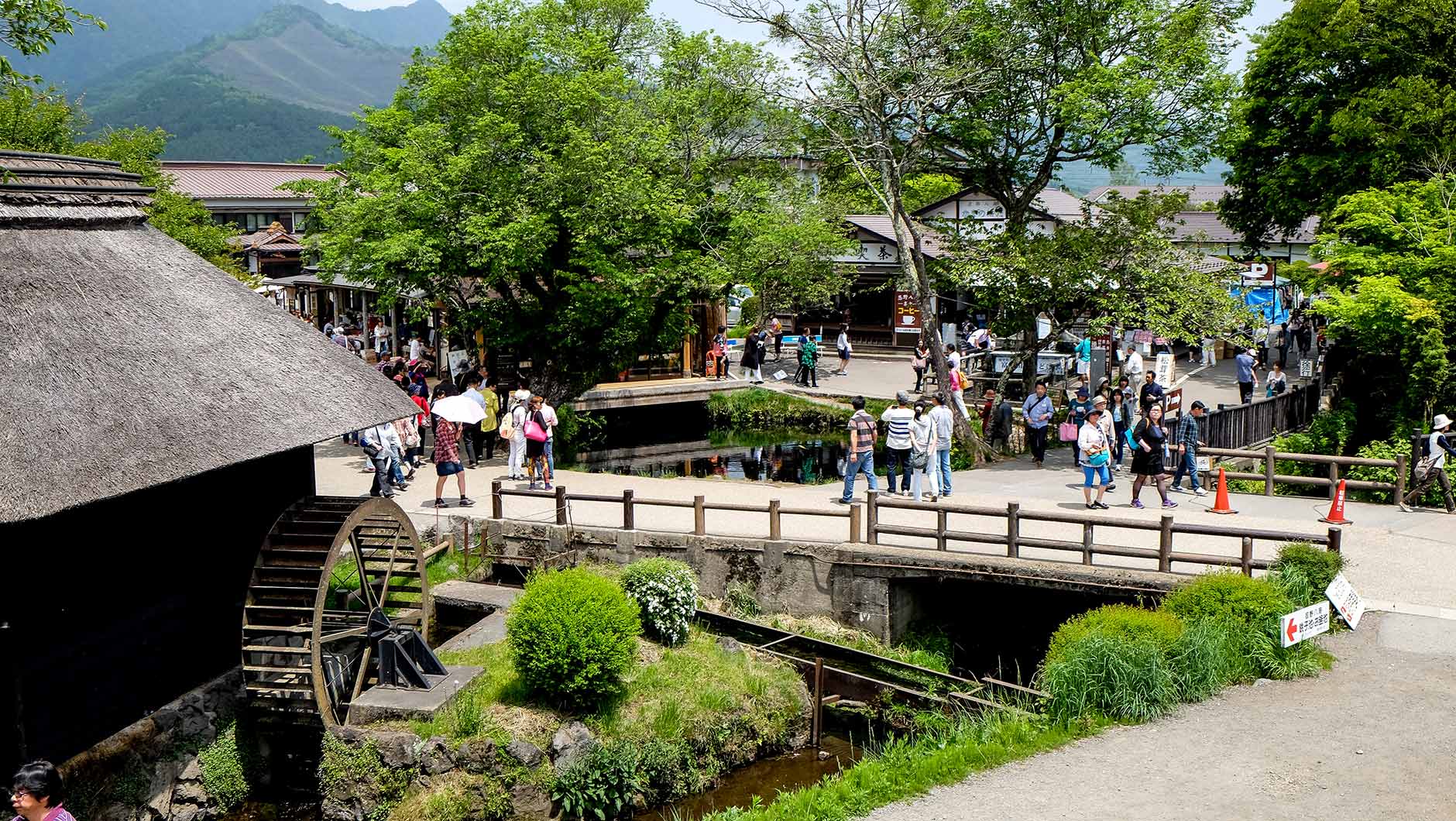
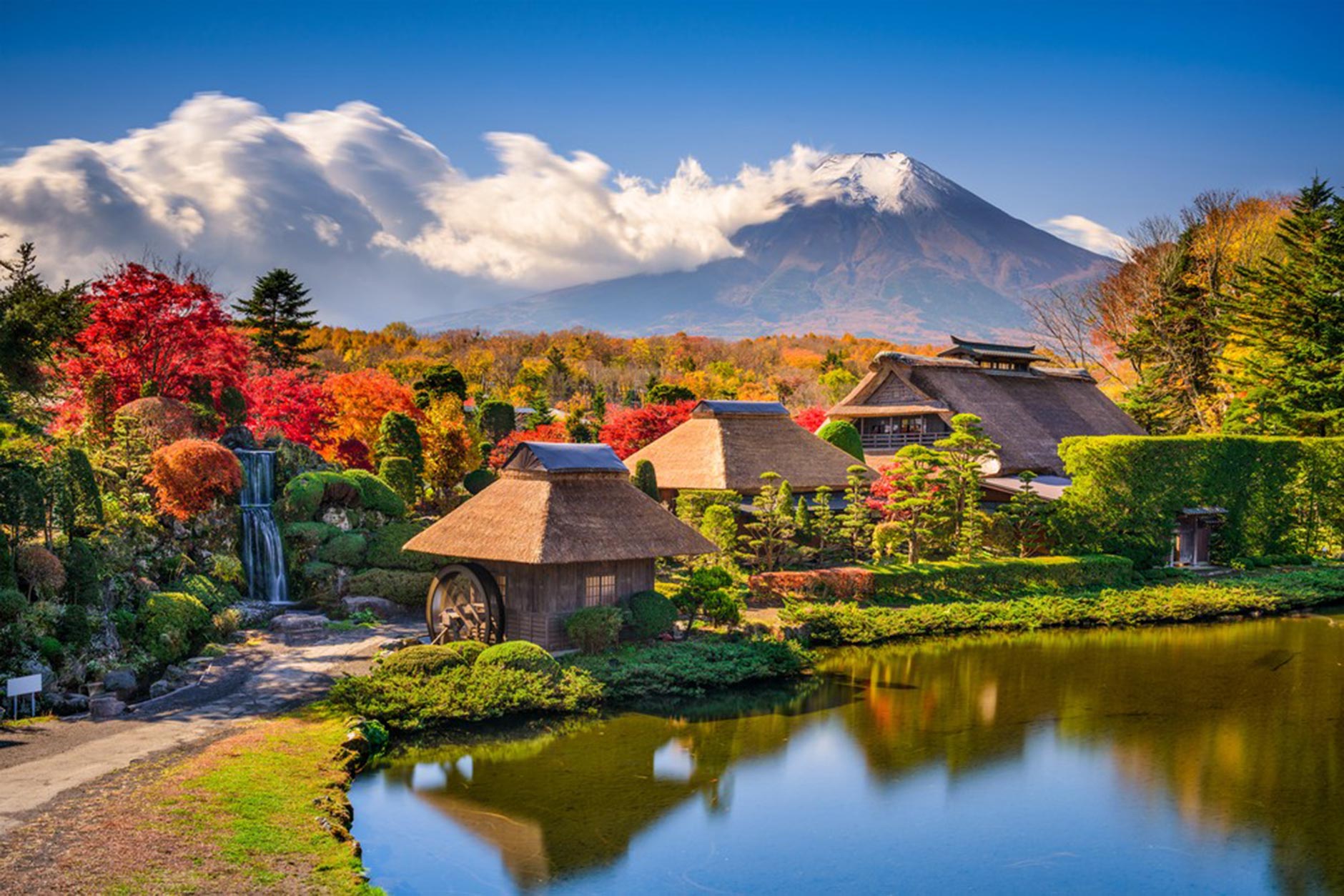 Mount Fuji in the background when the sky is clear! Photo Credit: www.fun-japan.jp (website)
Mount Fuji in the background when the sky is clear! Photo Credit: www.fun-japan.jp (website)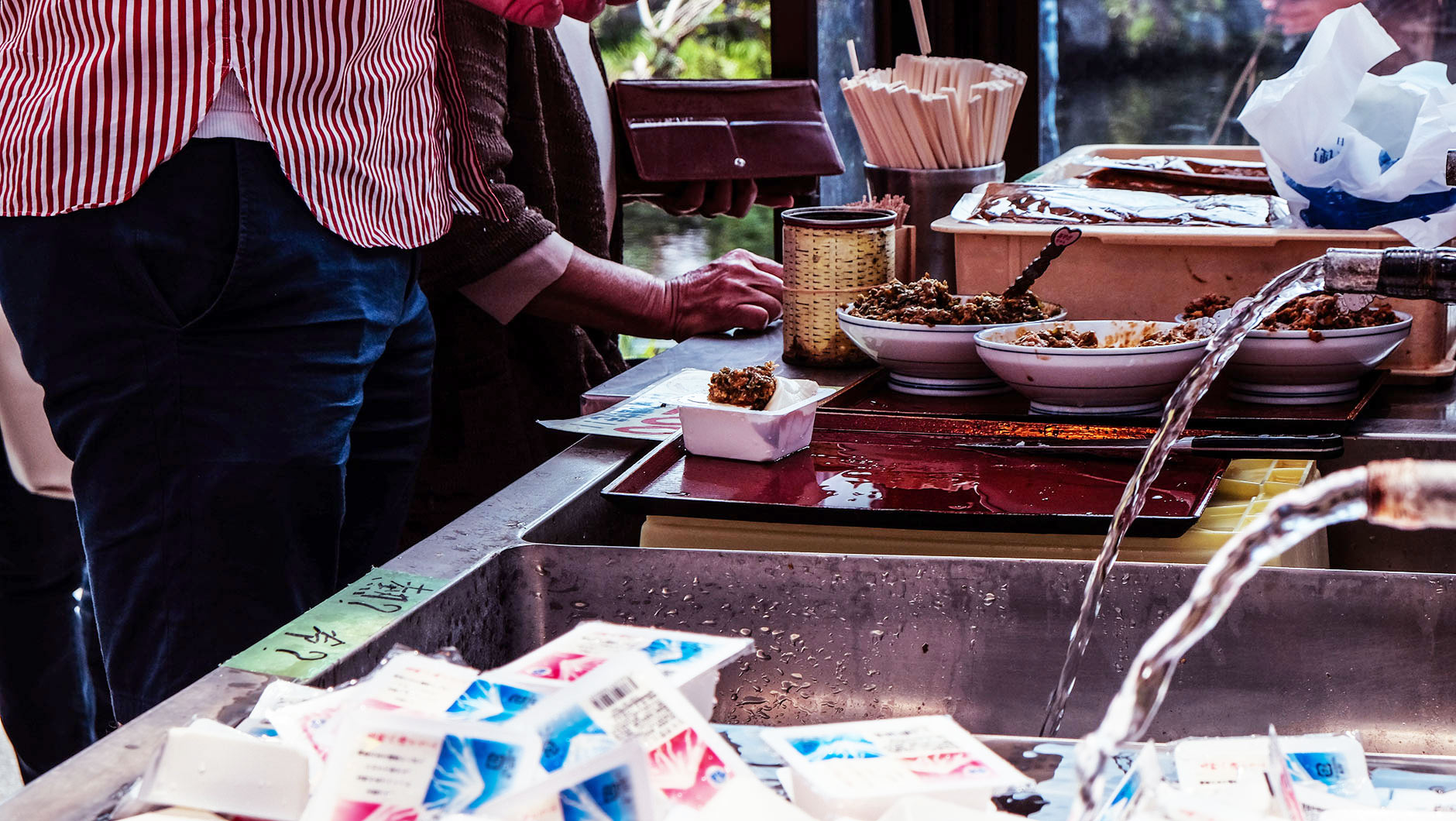
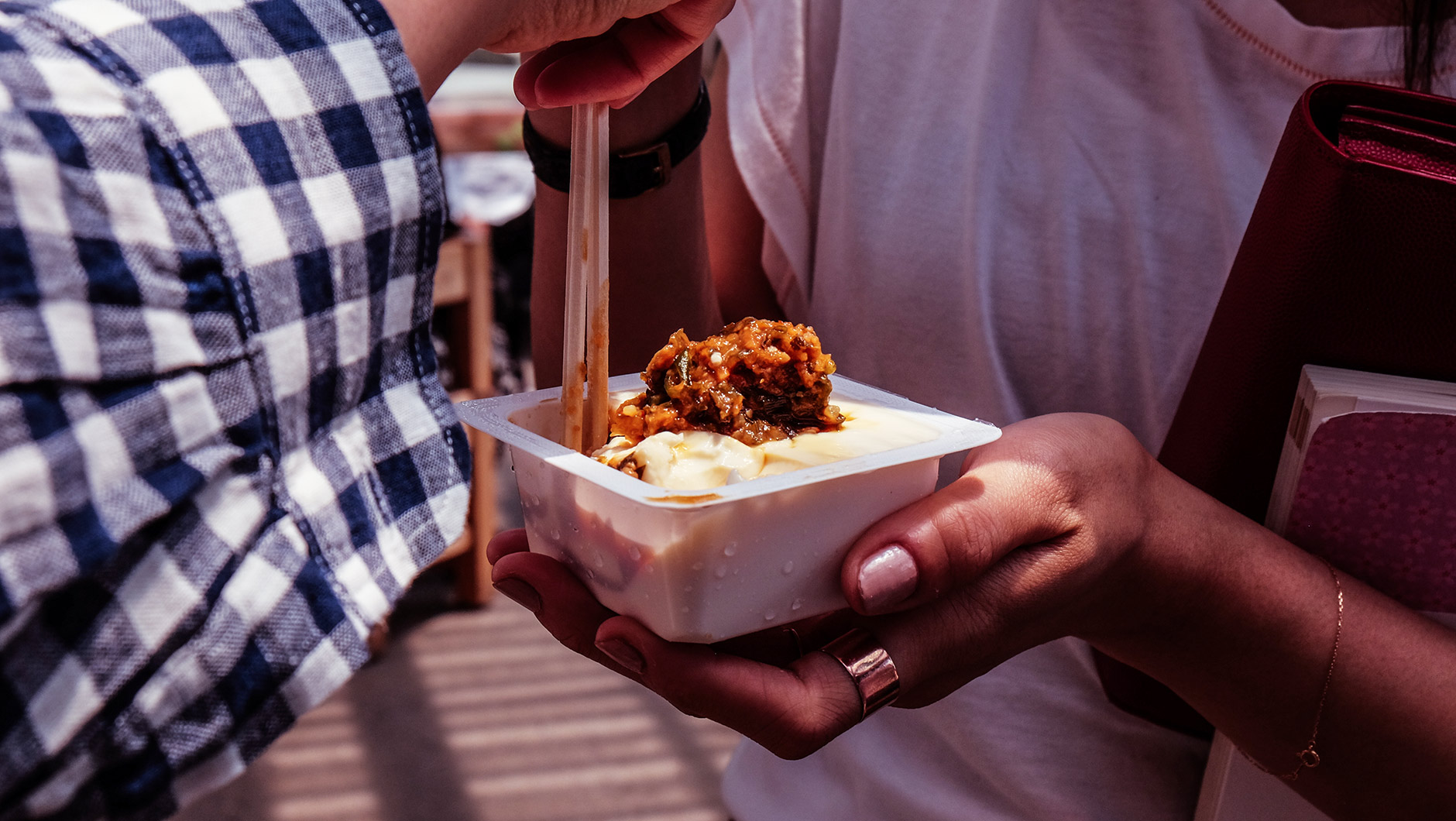
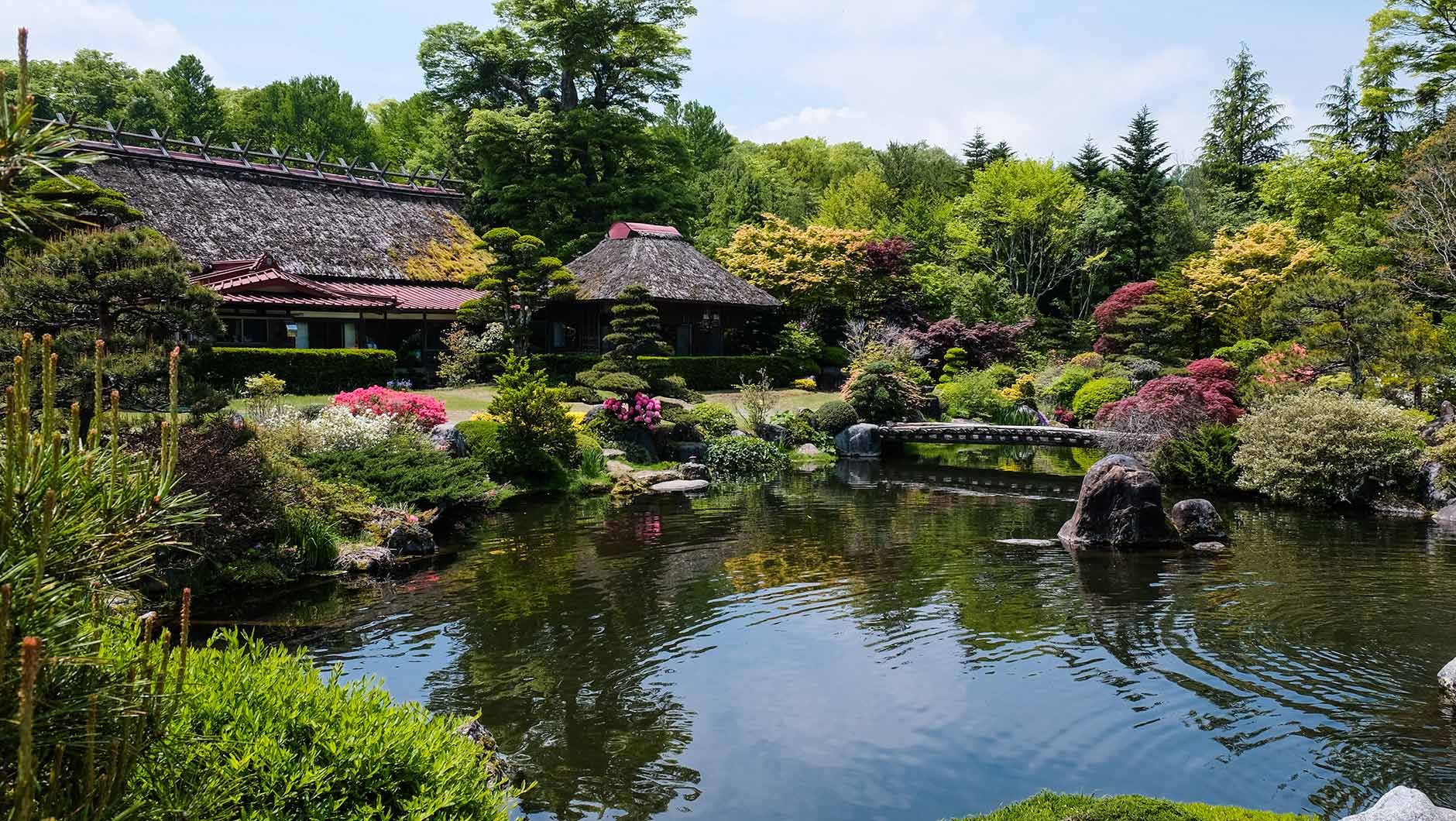
Oh my God! Looks great <3
http://carmelatte.co/the-most-effective-shoes-for-the-a-w2019/
This place looks way too beautiful to be real!! Obsessed! Have a lovely day! xx
Andreea,
http://couturezilla.com/
Wonderful tour of a beautiful place – thank you!
Reading this post made me realize I don’t leave the city enough… the Hakkai springs are beyond beautiful! It’s crazy that a place so beautiful is not too far if I can just make the time for a short trip there!
These photos are simply amazing! Thank you for sharing with us such beautiful place!
xx Elisa
http://www.francinesplaceblog.com
DIY & LIFESTYLE BLOG
What a beautiful place. Loved your images..
https://www.mysecretluxury.com/
Wow this looks absolutely fabulous !!
Just came back from Thailand and could already fly away again ;) ♥
xxx
Tina
https://styleappetite.com
[…] The Spring of the Gods and UNESCO site Oshino Hakkai […]
Such beautiful gardens and ponds. I saw this thatched roof farmhouse from Scoopon and I can’t believe I’m reading more about it now, I want to go there.
http://www.busyandfab.com
[…] See the Spring of the Gods at Oshino Hakkai. […]